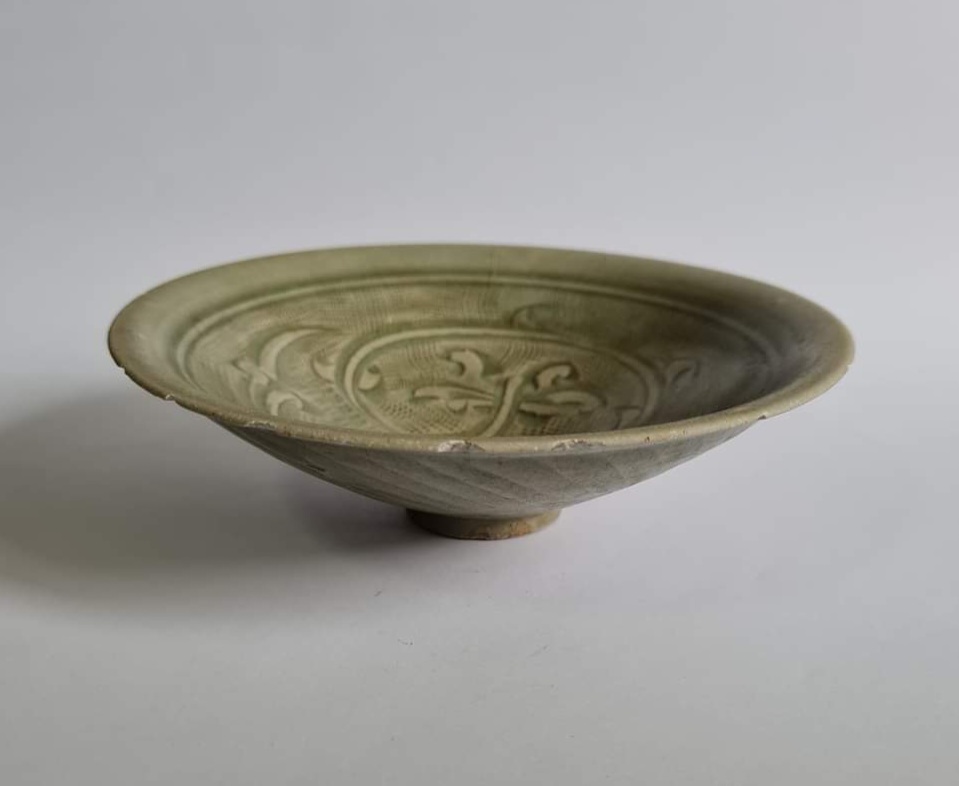
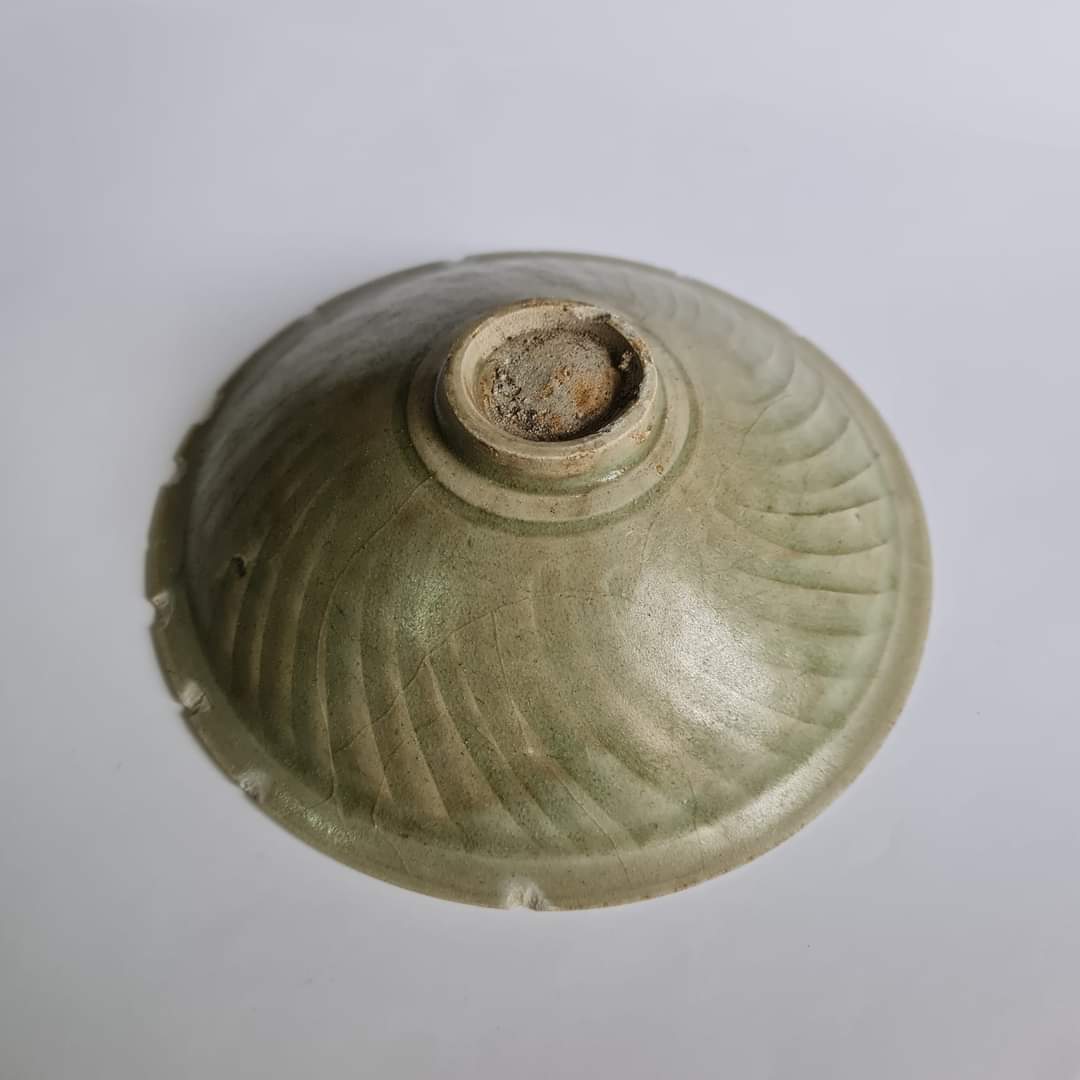
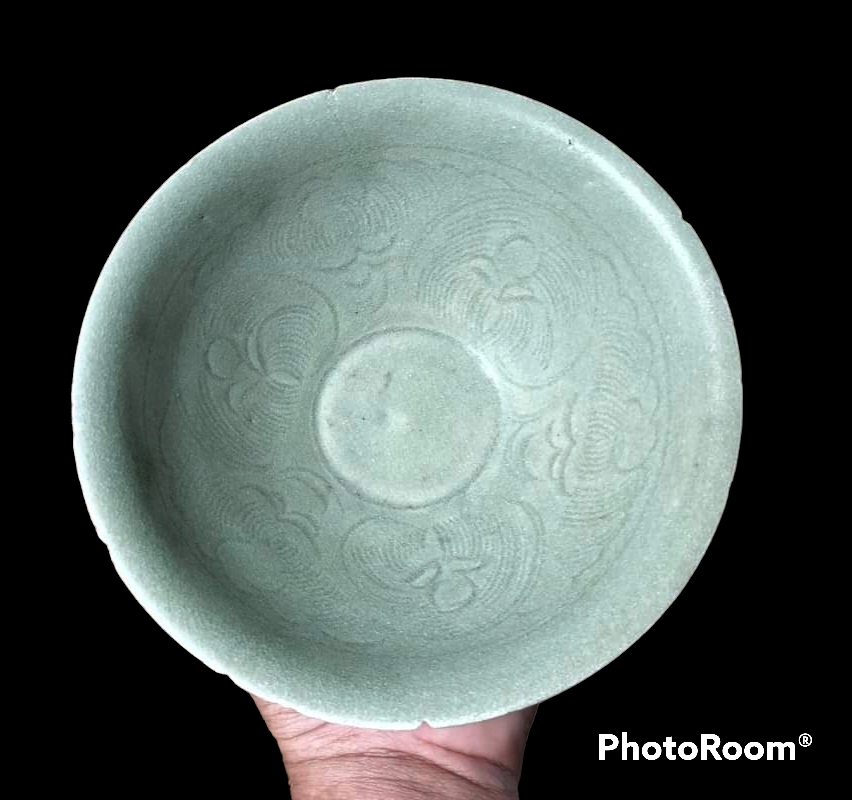
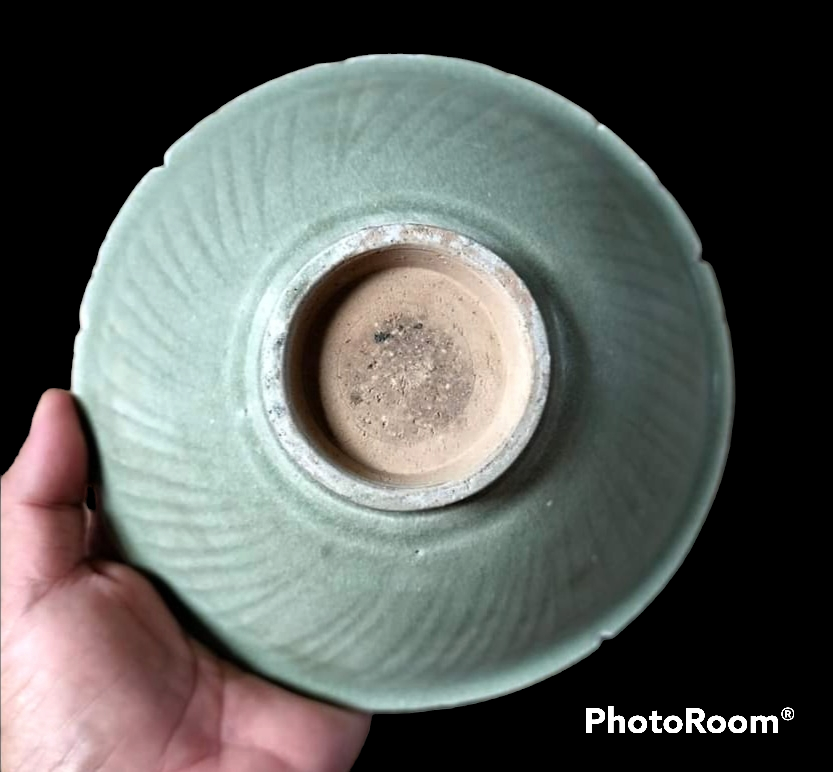
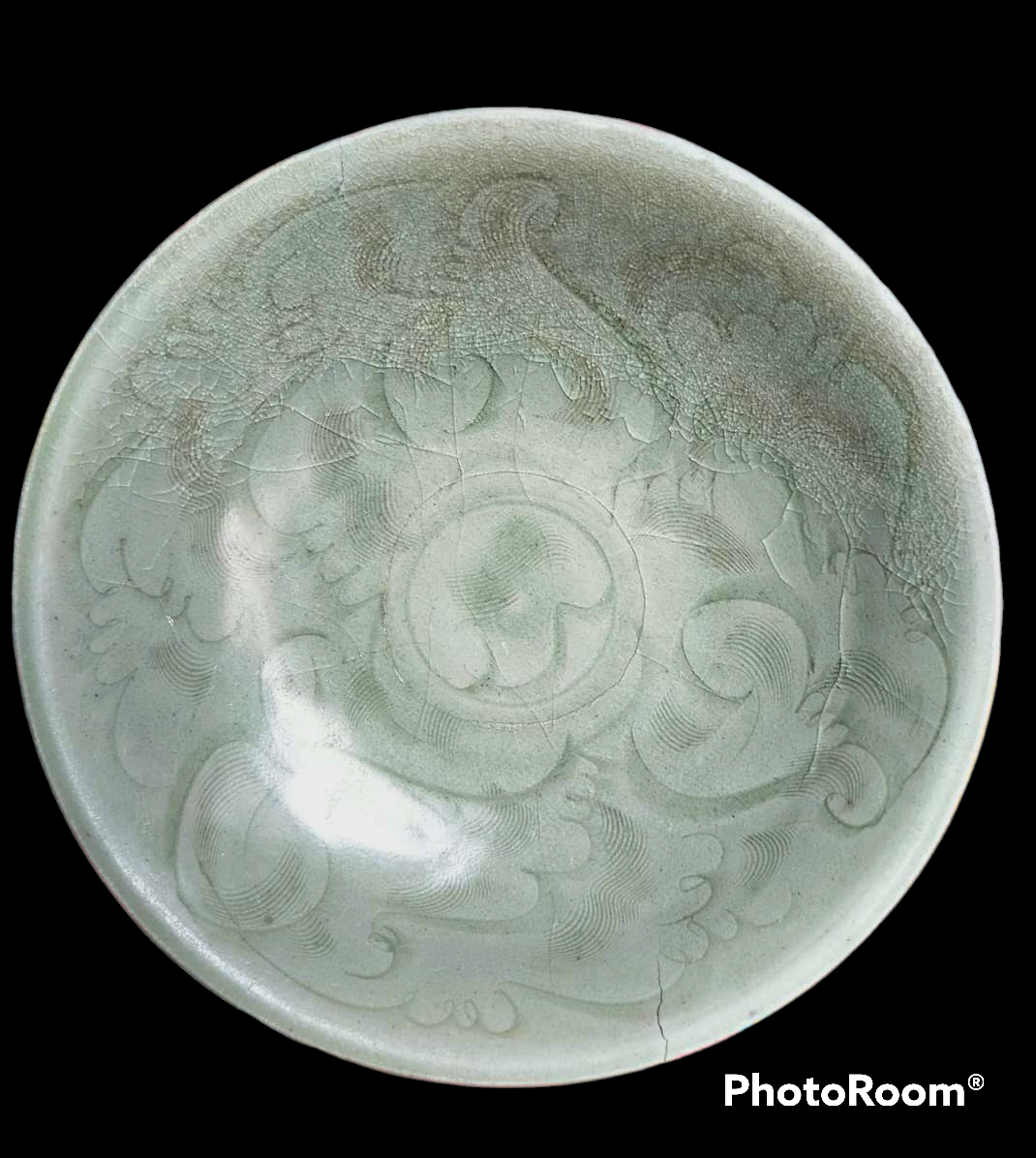
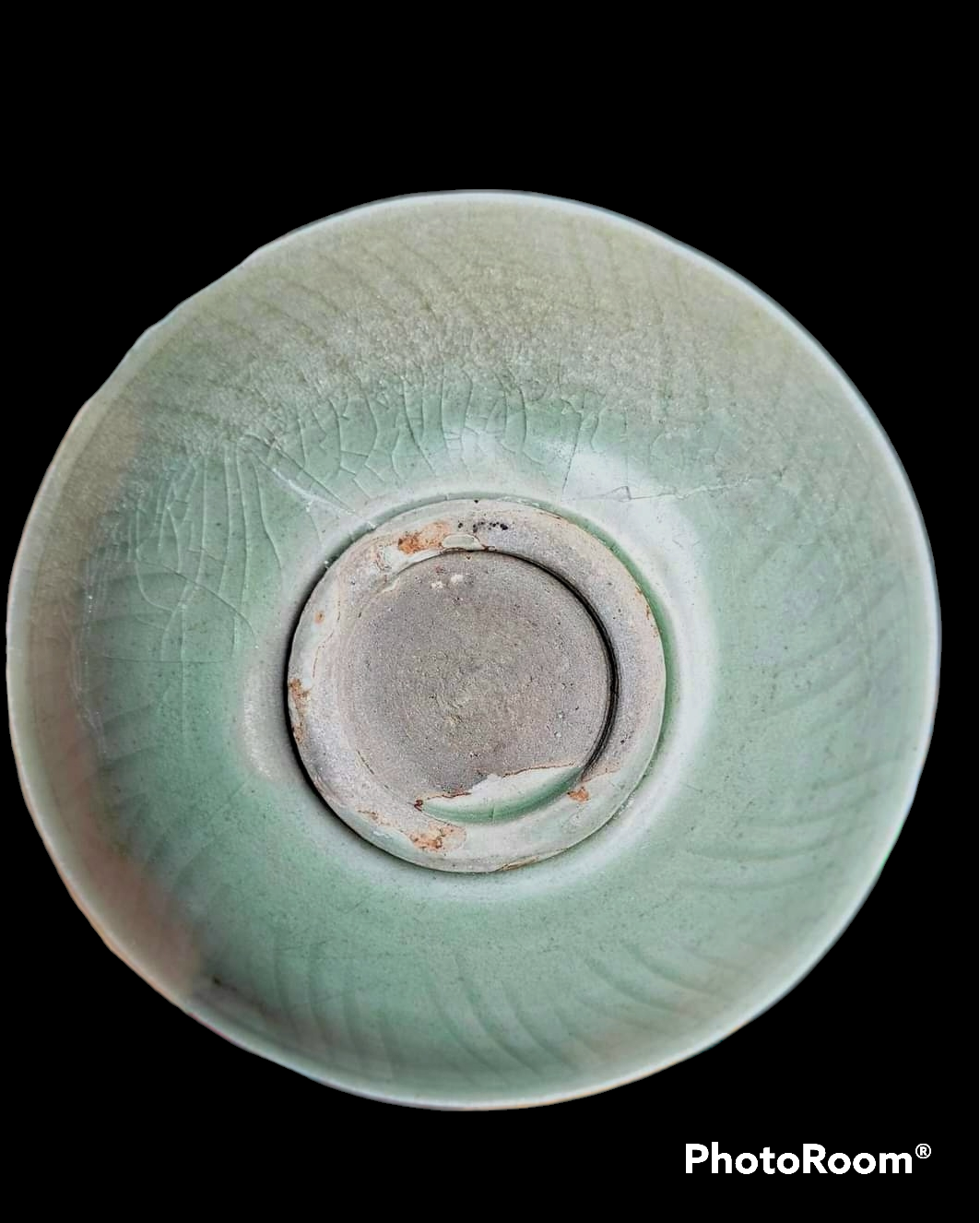
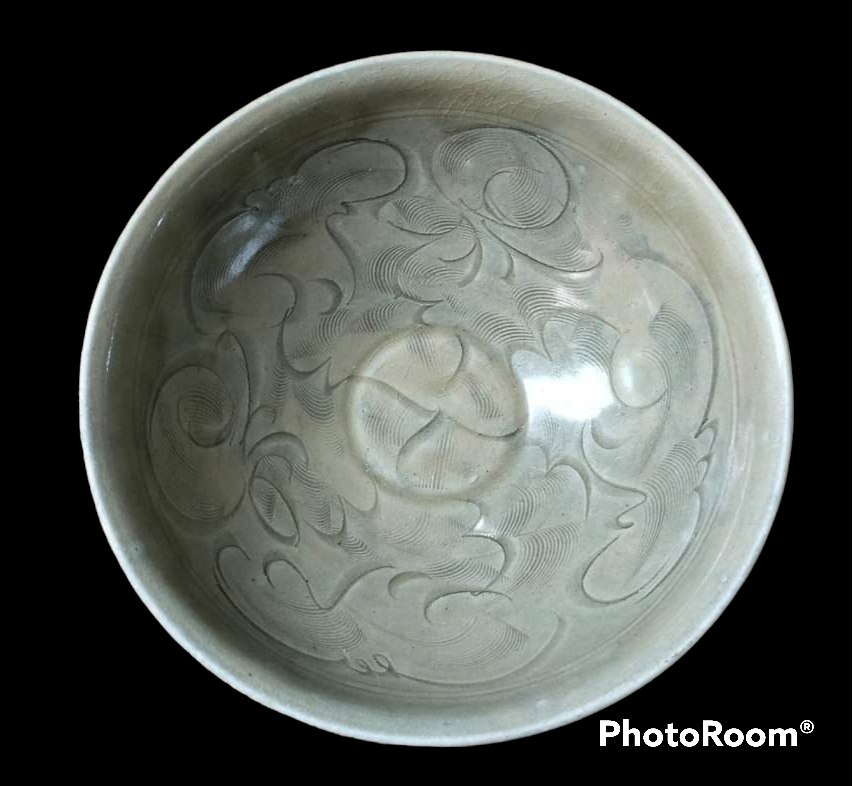

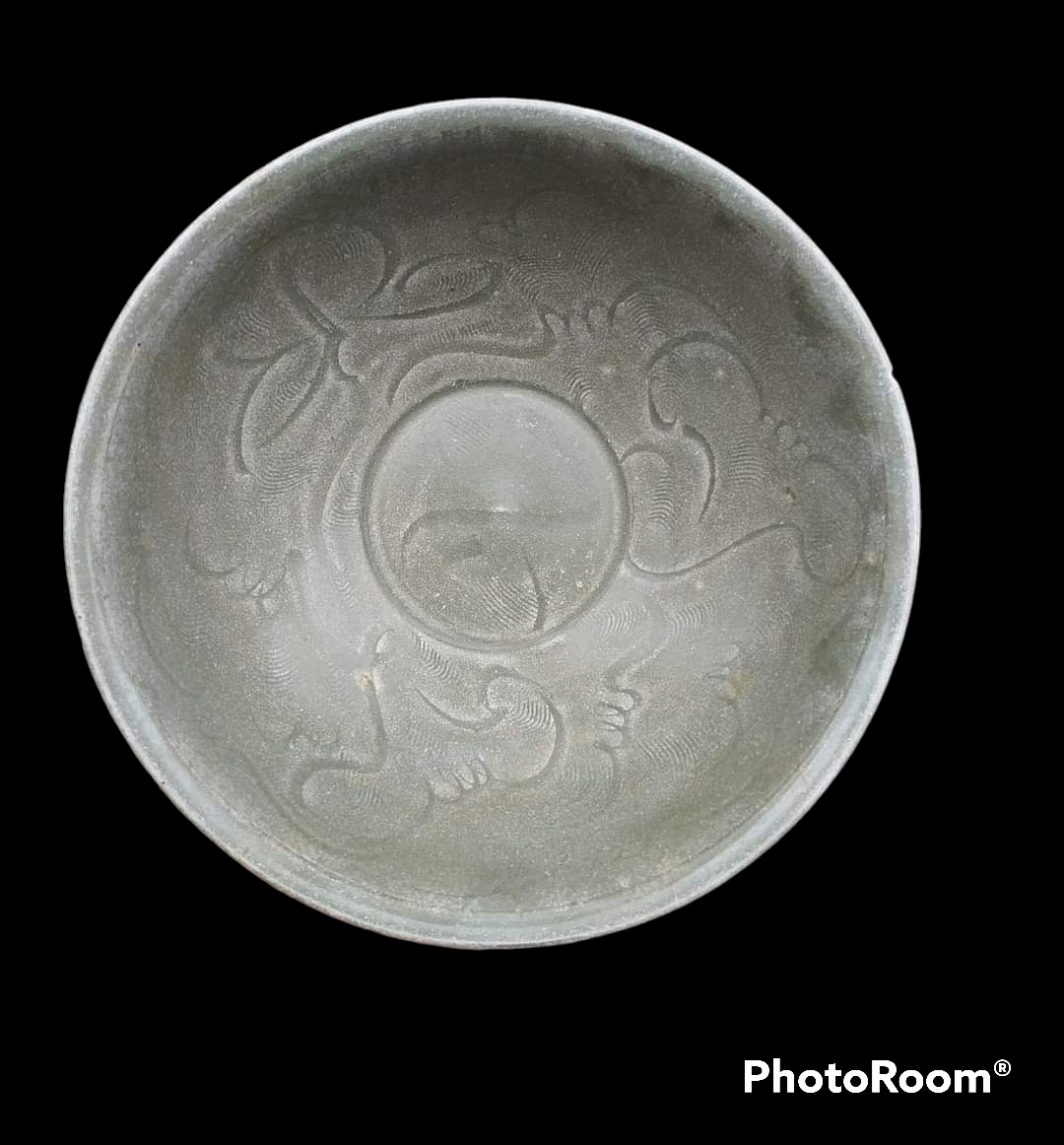
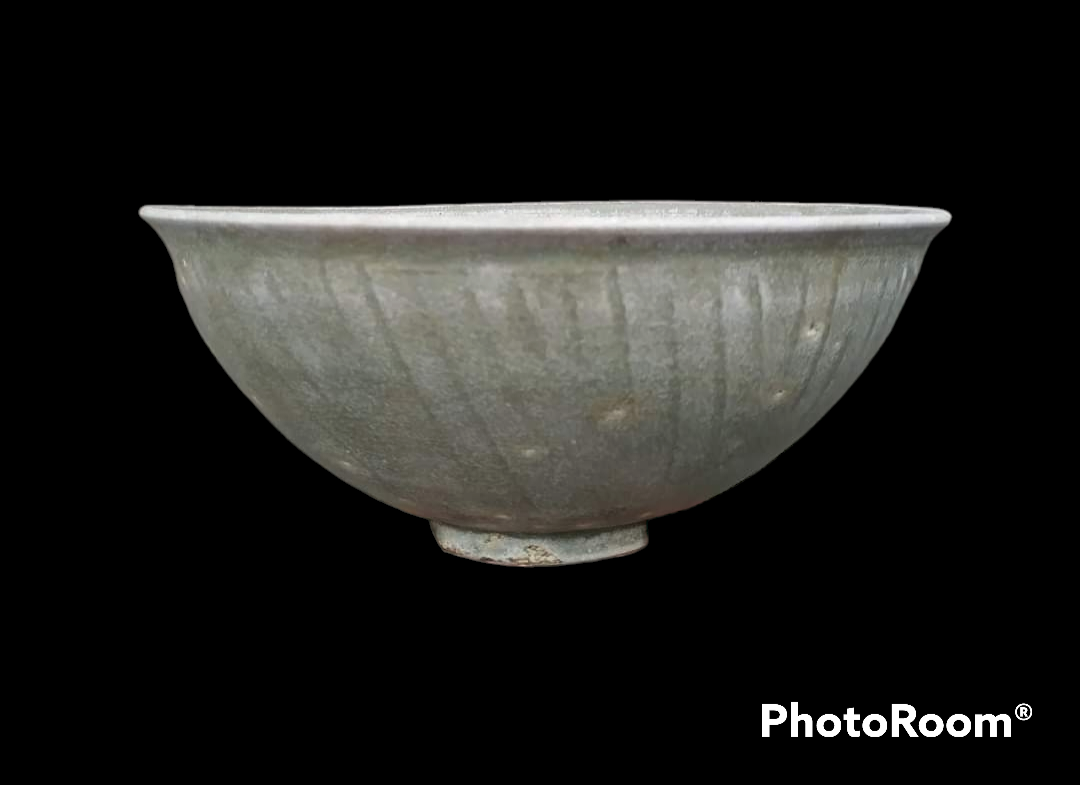
Late Northern Song/Early Yuan Longquan celadon Found in Jambi Batang Kumpeh
Celadon is a word that is synonymous to Longquan greenware. Besides blue and white, this is definitely one of the best known Chinese porcelain. It could be found in countries along the ancient maritime silk route which linked Southeast Asia, South/west Asia. middle-east and East Africa. The quantity of Longquan celadon wares exported during the Song and Yuan period was enormous.
The Northern Song/Early Yuan Longquan wares recovered from Batang Kumpeh are representative of the best quality that were exported What is particularly impressive is the range of vessels that were found. It is a showcase of typical products of the early phase and its most glorious late Southern Song/early Yuan phase.
The kilns producing Longquan celadons were located in southern Zhejiang province, covering ten counties with most kiln sites located at Longquan (龙泉), Qingyuan (庆元), Yunhe (云和), and Lisui (丽水). Longquan had the most kiln sites, among which Dayao (大窑) and Jincun (金村) produced the best quality Longquan wares during the Song, Yuan and Ming period.
Based on latest archaeological kiln findings, ceramics production in Lonquan commenced in Jincun (金村) during the Northern Song period, with proposed date ranging from mid 10th to mid 11th century. The influence of contemporary Yue ware is evident. Similar incise decorative technique was used and Yue stacking technique using clay stripes on inner and outer base of vessels was adopted.
Late Northern/early Southern Song (1100 - 1150 A.D) Longquan wares
By Late Northern Song, the Longquan potters started to produce wares which are distinct and distinguishable from contemporary Yue wares The biscuit is light greyish to grey in colour. It has thinly applied transparent, glassy glaze with outer base left unglaze. The glaze typically is greyish green or yellowish green. But occasionally you do find some with clear light green tone. Chemical tests showed that it is lime glaze with low viscosity. Yue style clay stripes as separator was no longer used. Instead a clay disc separator was placed on the outer base. The typical bowl has carved vertical lines on the external wall and carved floral motif with combed zigzag dotted lines on the interior. An example with the vertical lines on the exterior wall was excavated from the the tomb of Li Bing couple of A.D. 1091 at Liyang, Jiangsu province.
Overseas findings from habitation sites (such as Dazaifu in Japan) indicates that they were also found during the early Southern Song period. Mr Kamei Meitoku, a Japanese ceramics expert, did an article on the Chronology of Longquan wares. Basing on the archaeological findings in Longquan and Japan, he suggested that those vessels with carved/combed motif were produced from late 11th to first half of 12th century, ie. late Northern Song Period to early Song period.
Bowls from this phase (1100 - 1150 A.D) were also found in Jambi Batang Kumpeh but appeared to be small in number.
 |
 |
| Typical Late Northern Song bowls with carved vertical lines on the external wall and carved/incised floral motif with combed dotted lines on the interior. | |
 |
 |
 |
 |
 |
 |
 |
 |
| Examples with carved floral and combed lines. Such type which the line is continuous and not dotted form made their appearance later but still within the 1100 - 1150 A.D duration. | |
Early/Mid Southern Song (1150 - 1200 A.D) Longquan Wares
During the early/mid Southern Song phase (1150 - 1200 A.D), the typical bowl has a thick body and thick foot with unglaze outer base. Decoration is typically more sparse and combed lines have practically disappeared. Bowls with carved lotus decoration were introduced and remained popular into the Yuan period. The early pieces have stylised carved/combed lotus petals on the external wall. Subsequently, the external wall is left undecorated. Many such bowls were found in Jepara, Java Sea and Nanhai 1 wrecks. This carved lotus decoration was particularly popular and widely copied by Fujian kilns.
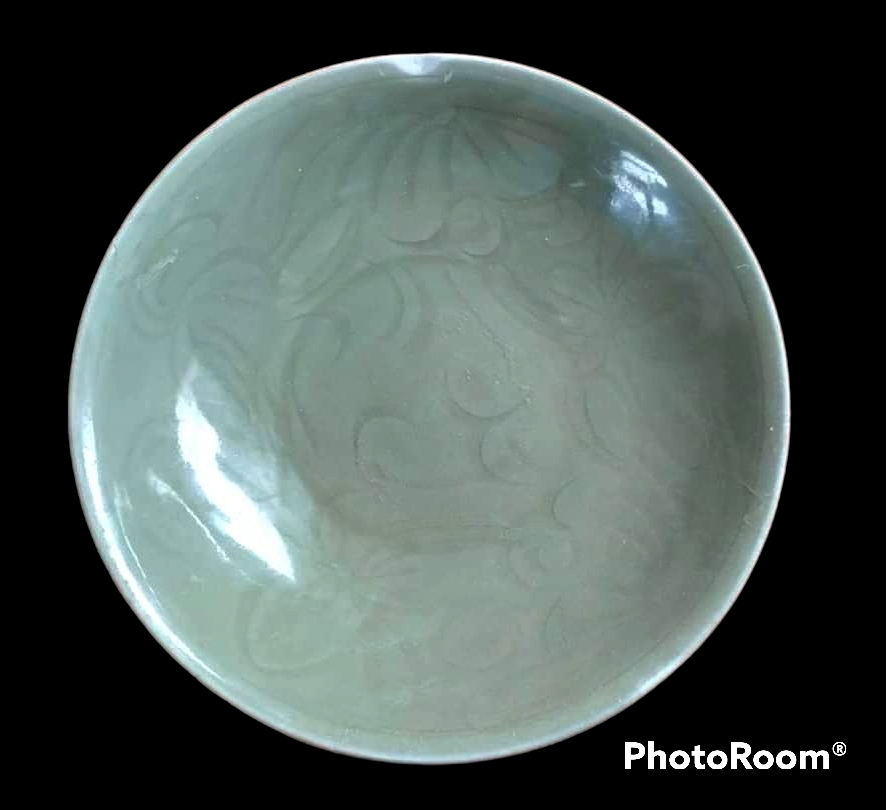 |
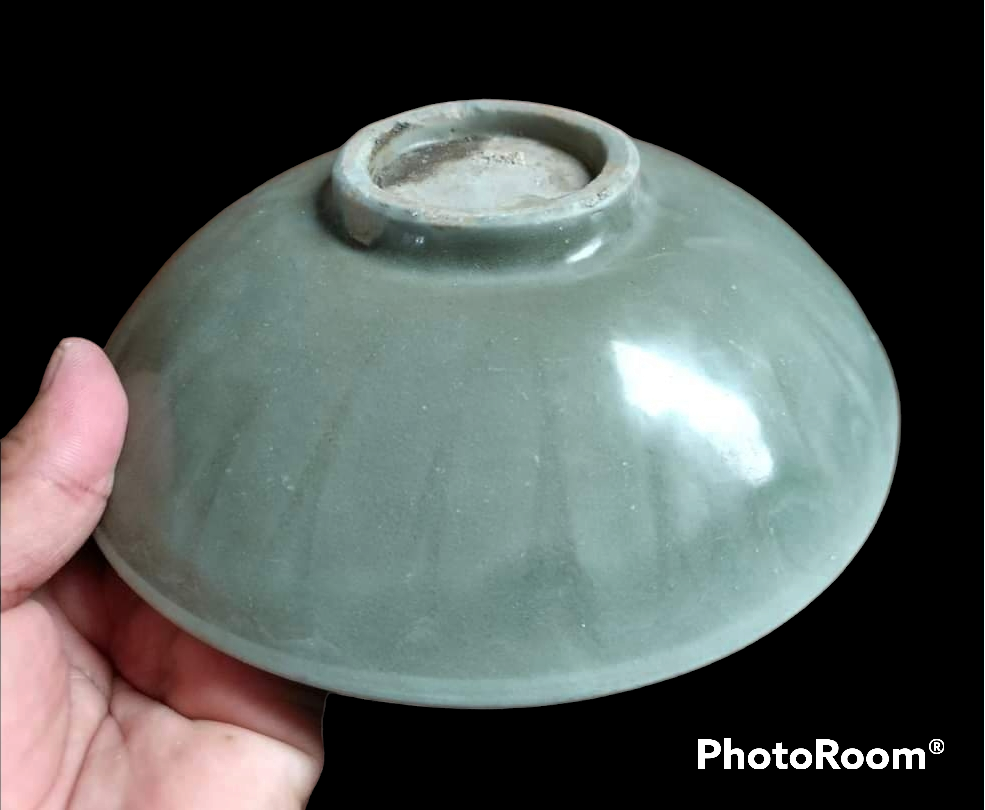 |
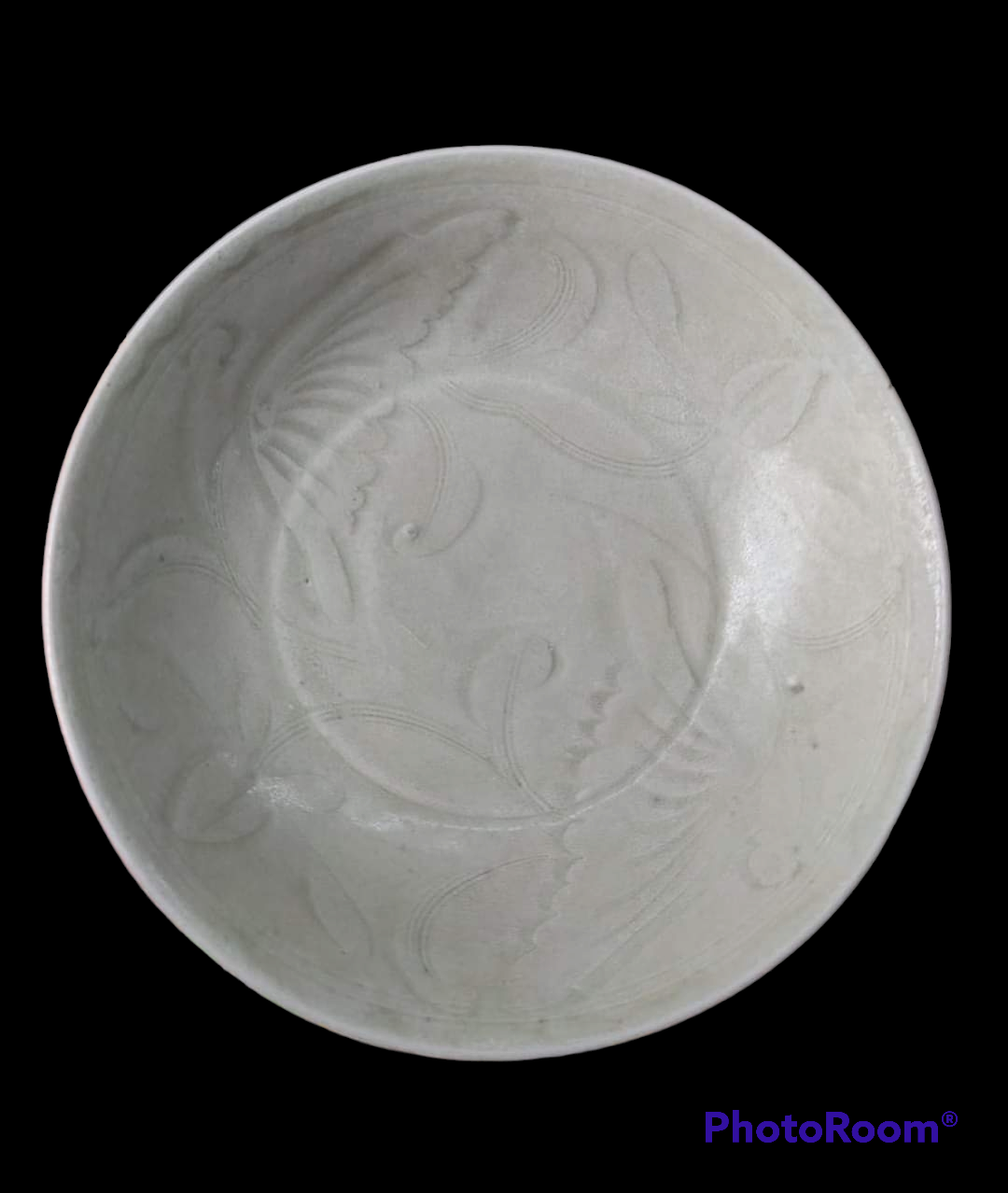 |
 |
| Examples with the carved lotus decoration on the interior | |
Another new composition with stylised floral motif separated by elongated "s" shaped lines was also introduced. A significant number was salvaged from the Jepara wreck.
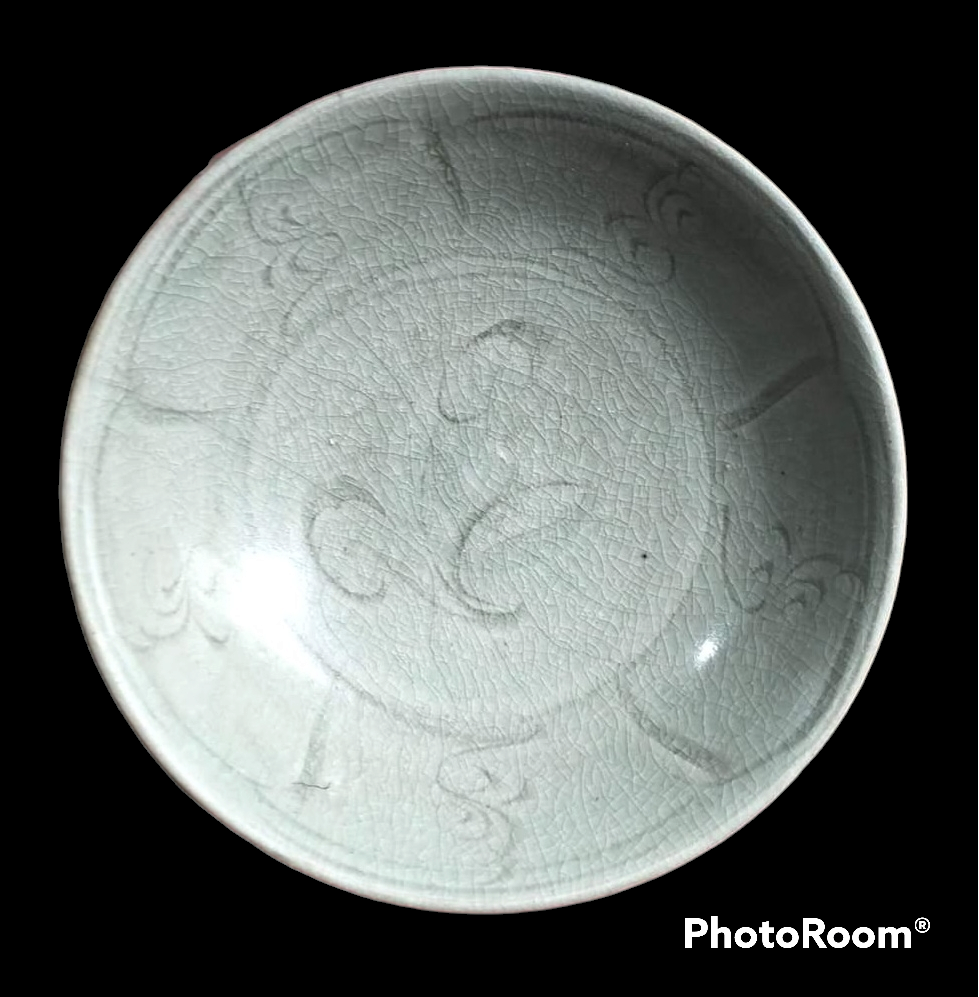 |
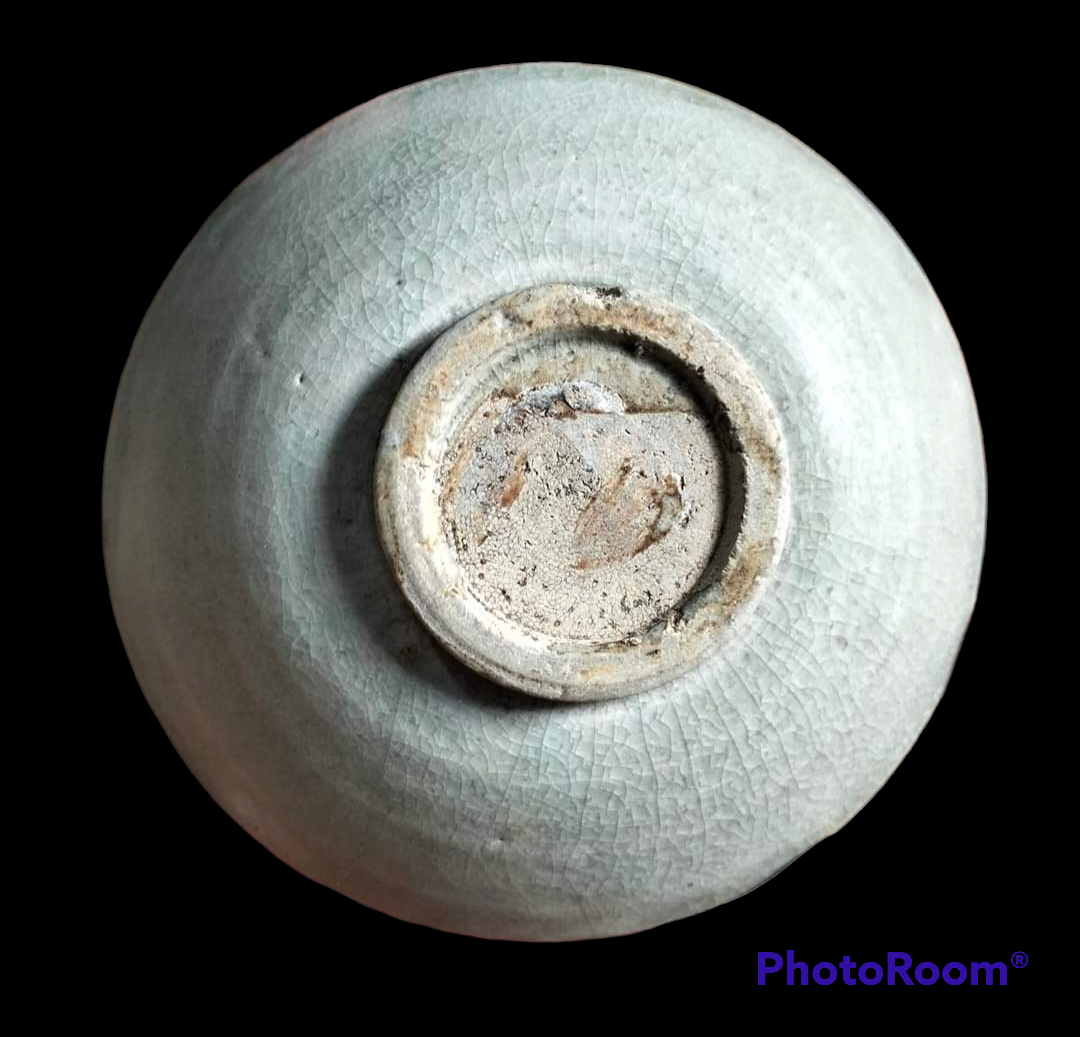 |
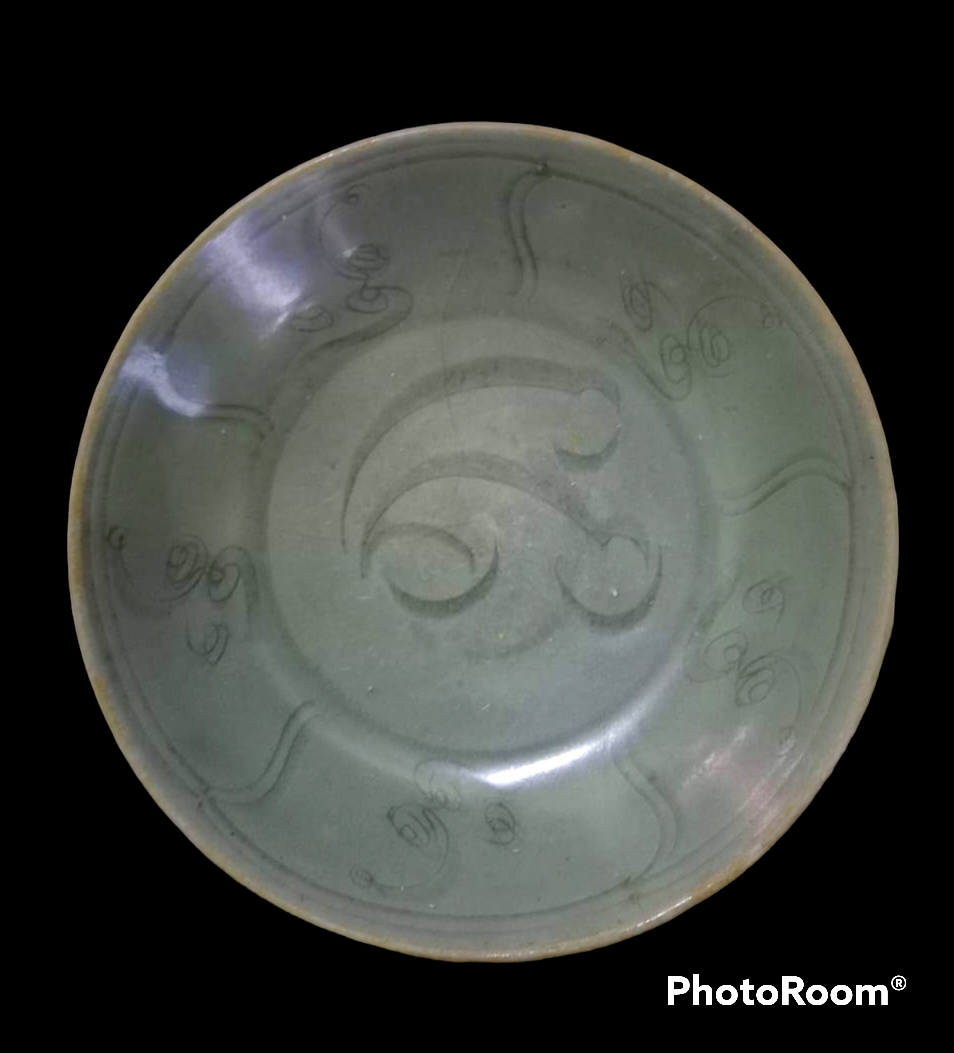 |
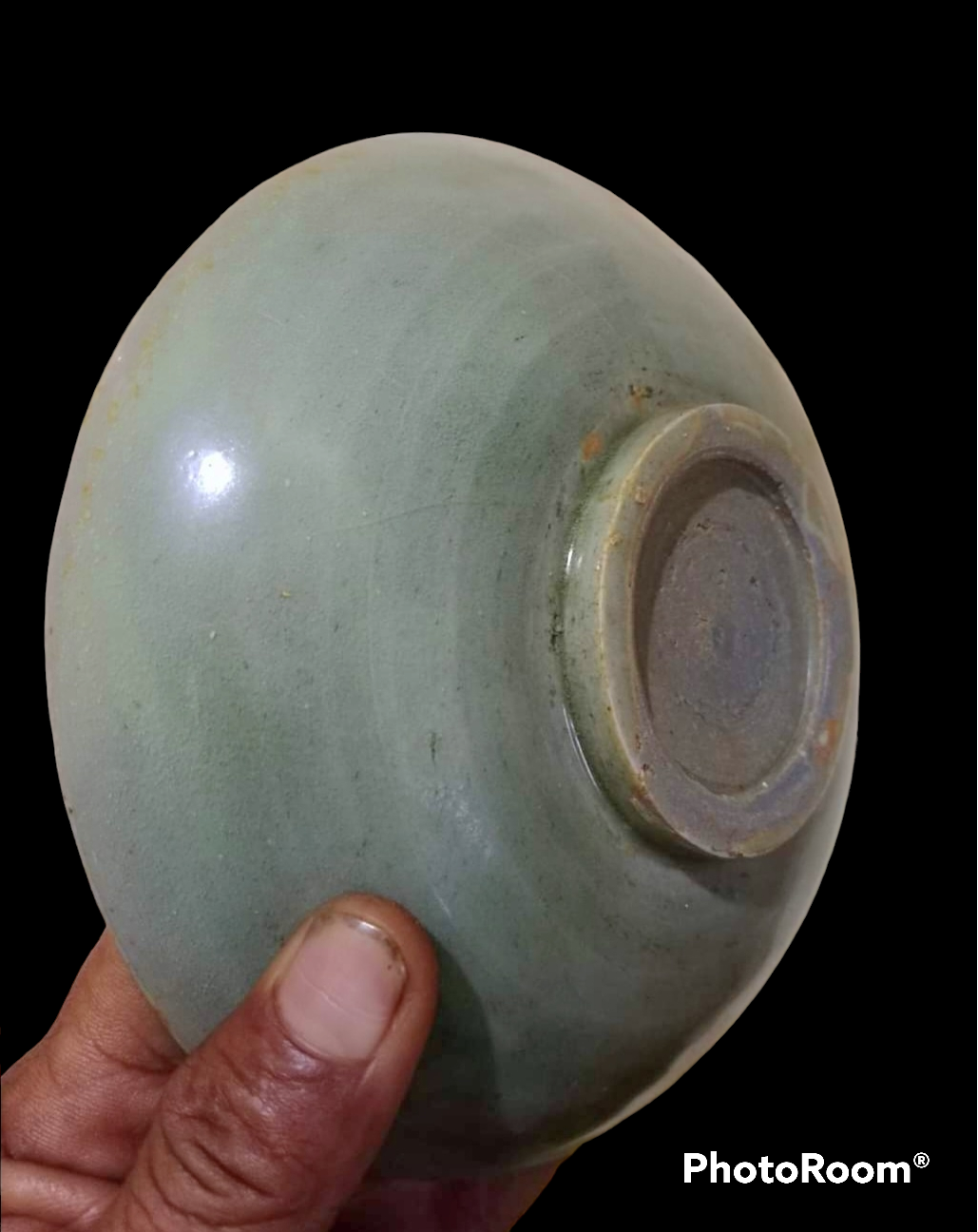 |
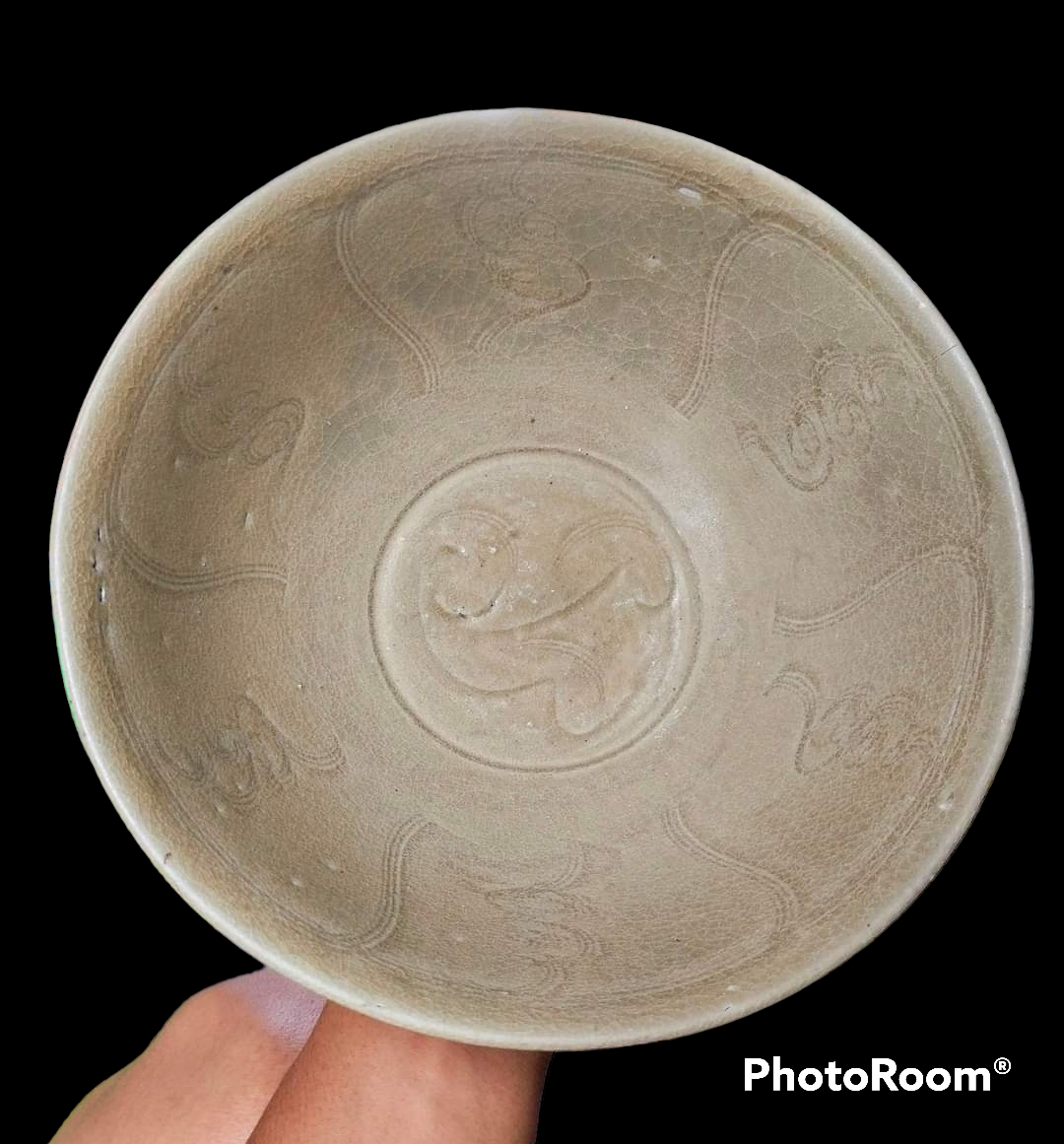 |
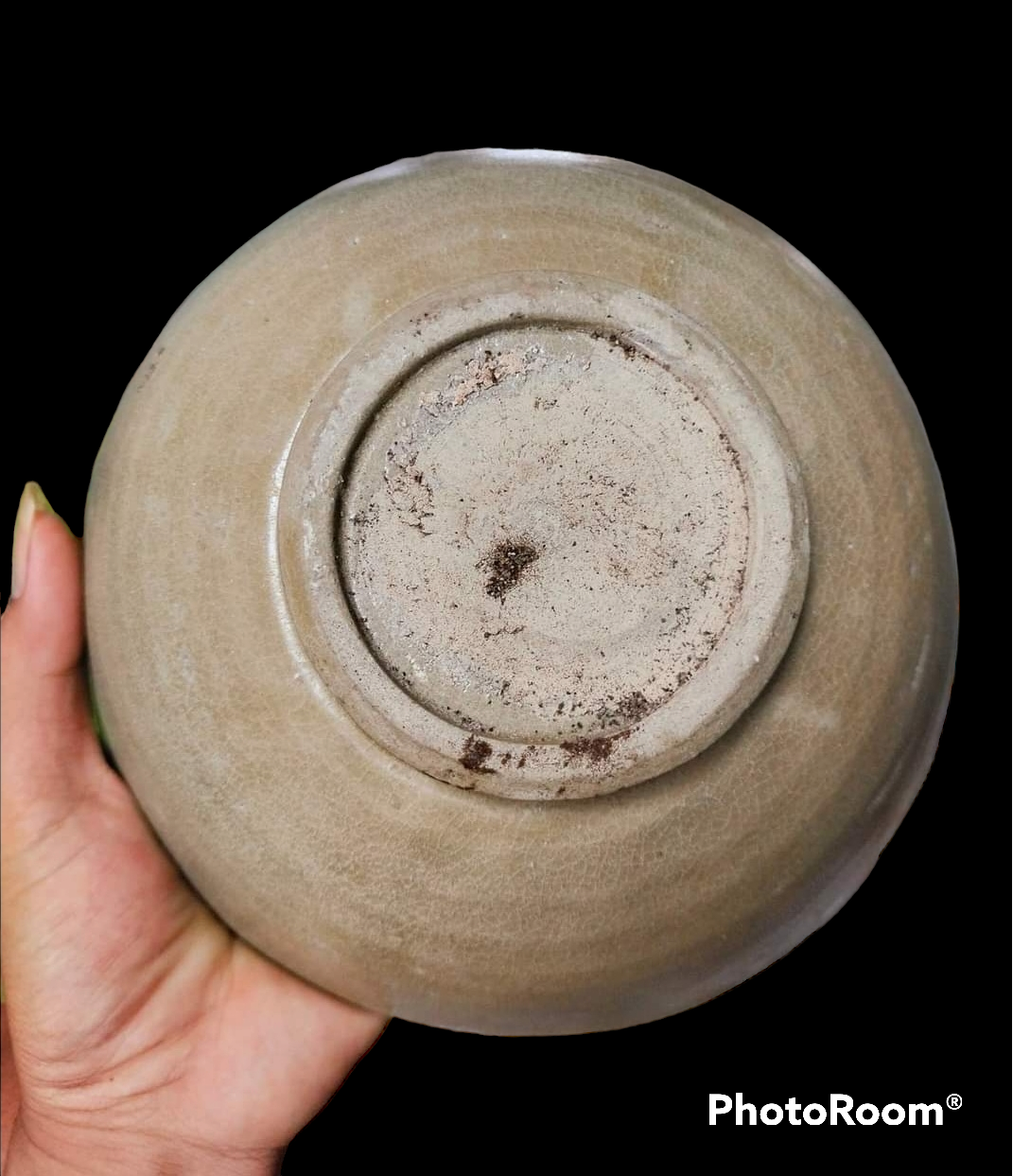 |
| Examples with stylised floral motif partitioned by elongated "s" shaped lines | |
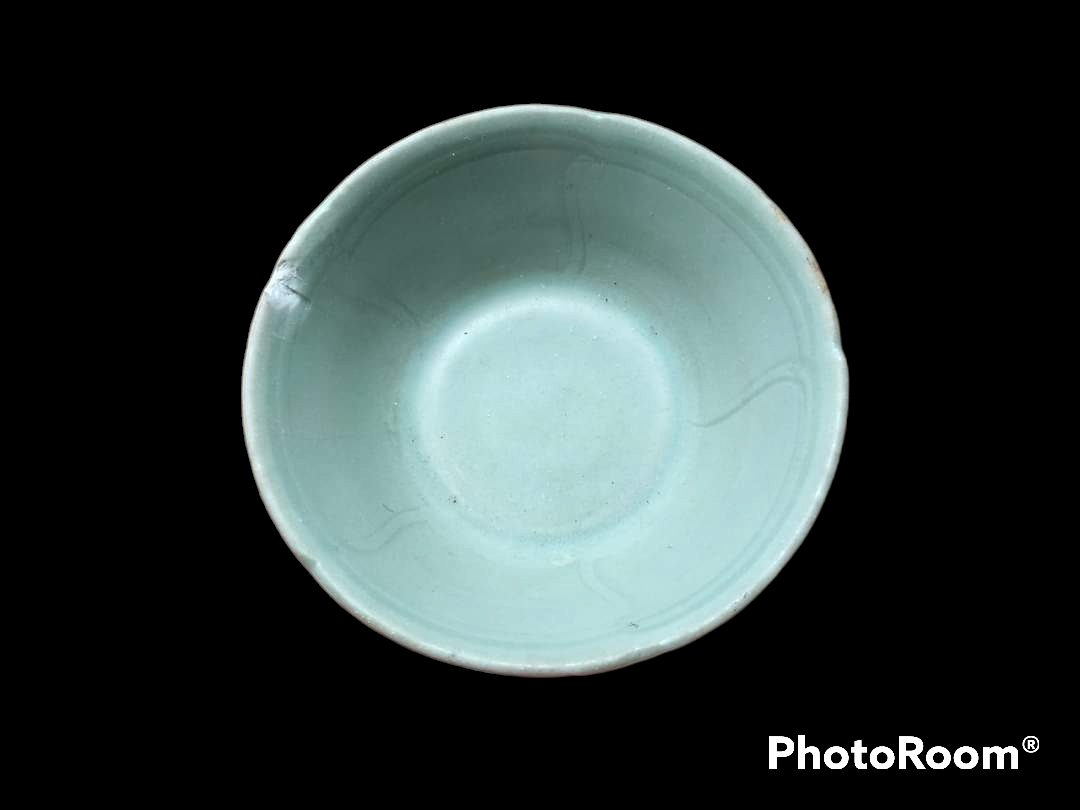 |
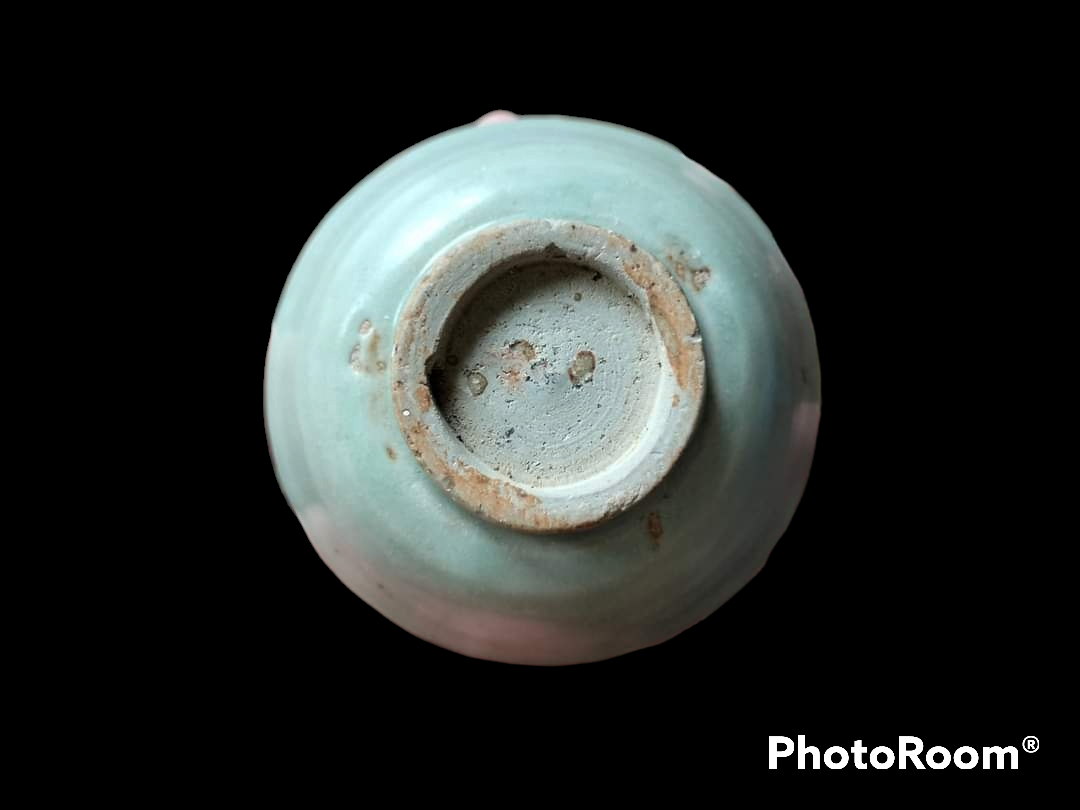 |
| An example with just the elongated 's" lines partition | |
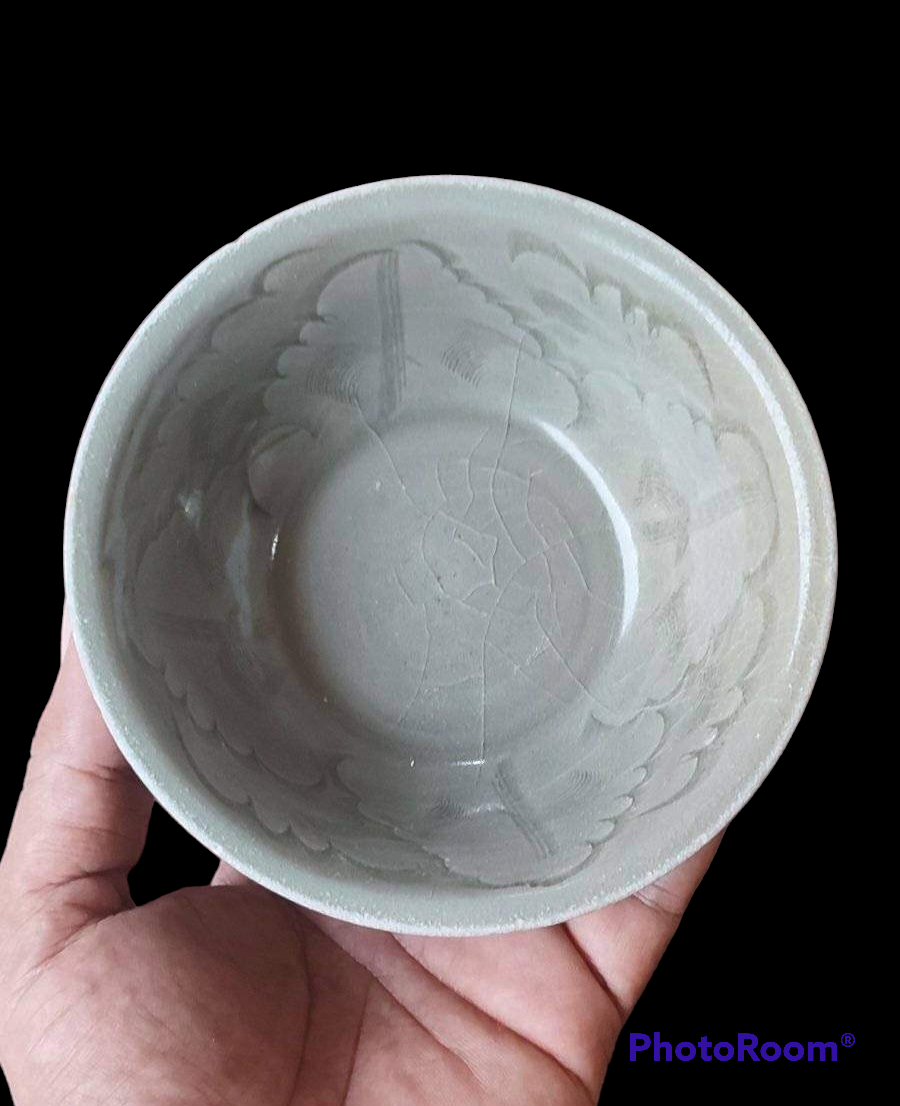 |
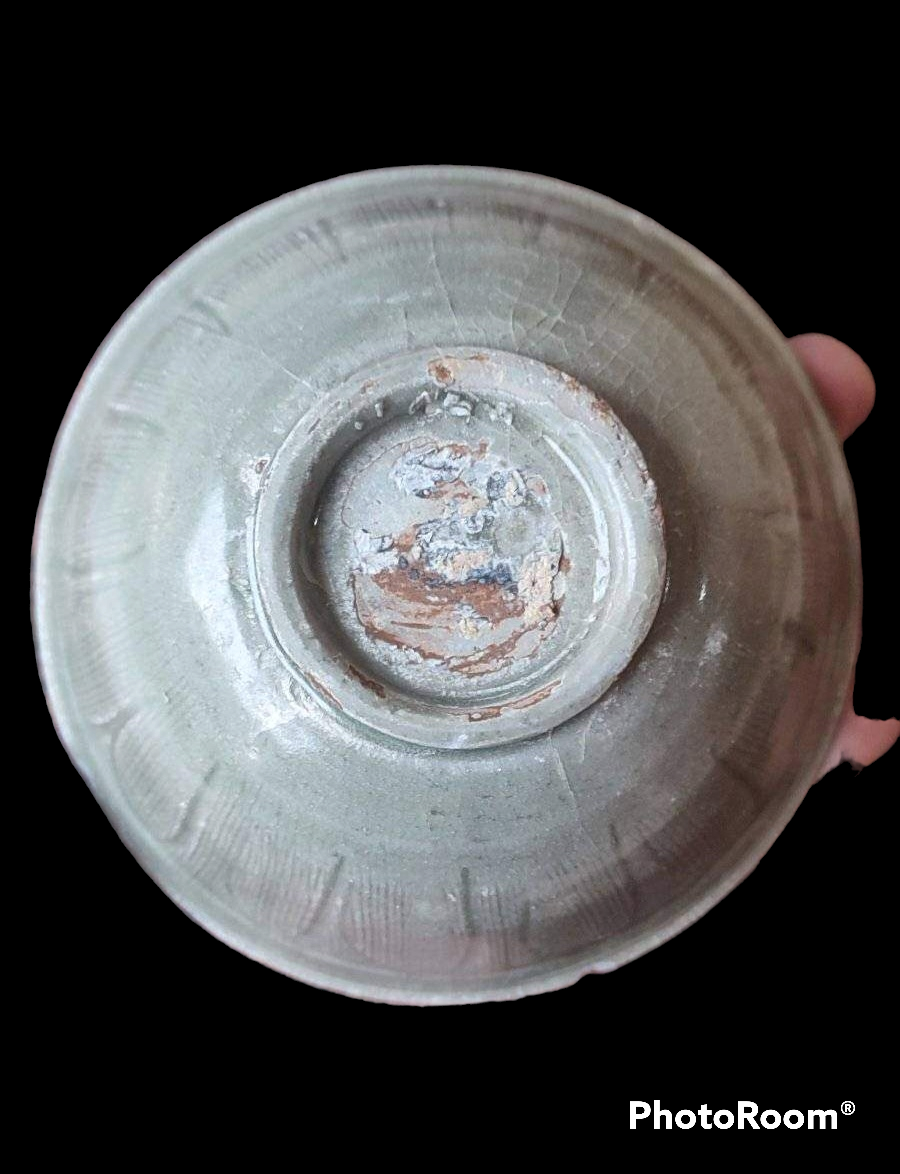 |
| Bowl with cavetto decorated with carved/combed plantain leaves. In view of the combed feature and thinner potting, it likely dated closer to 1150s. | |
There is also a type with an impressed inscription on the interior base which reads 河滨遗范 " He Bin Yi Fan" (river bank legacy) or 金玉满堂 |jingyumantang" (gold jade filled hall) .
 |
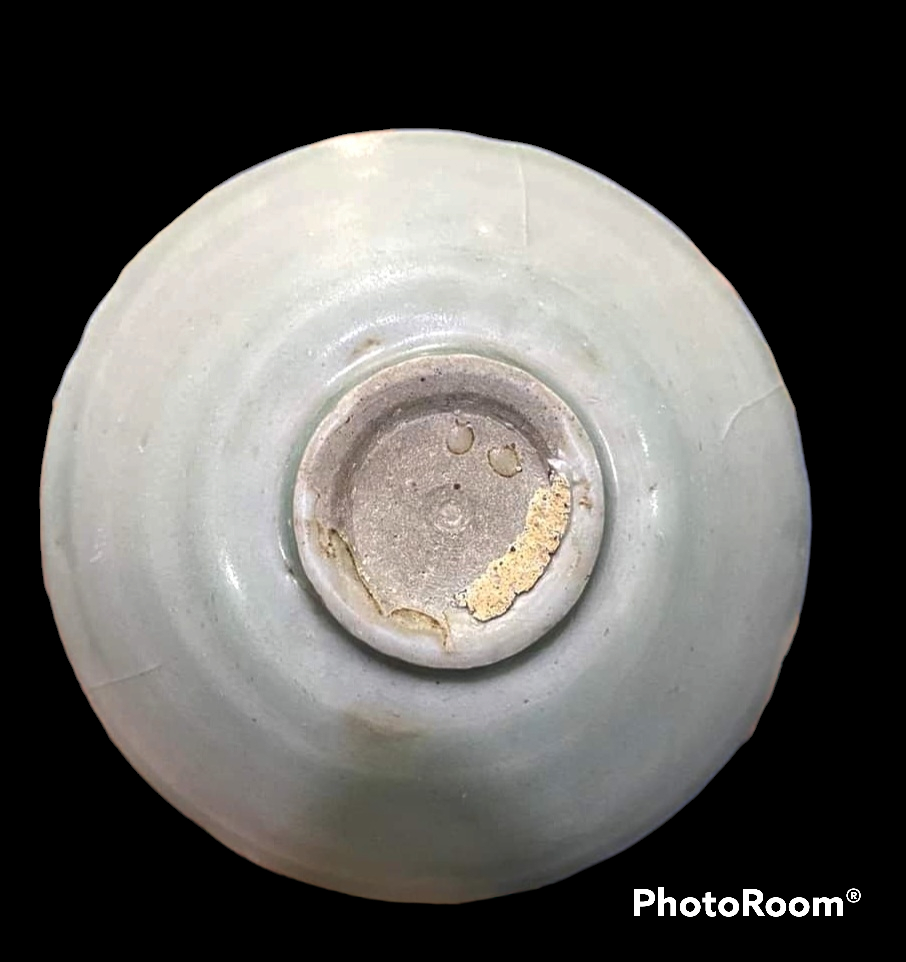 |
| Foliated rim bowl with impressed inscription He Bin Yi Fan (河滨遗范) | |
Most lonquan bowls of the early Southern Song period are small in size. However, Longquan Anfu kiln produced a big version (24 Dia. cm), the most common are those with the carved wild goose in flight decoration. A significant number were salvaged from the Jepara wreck.
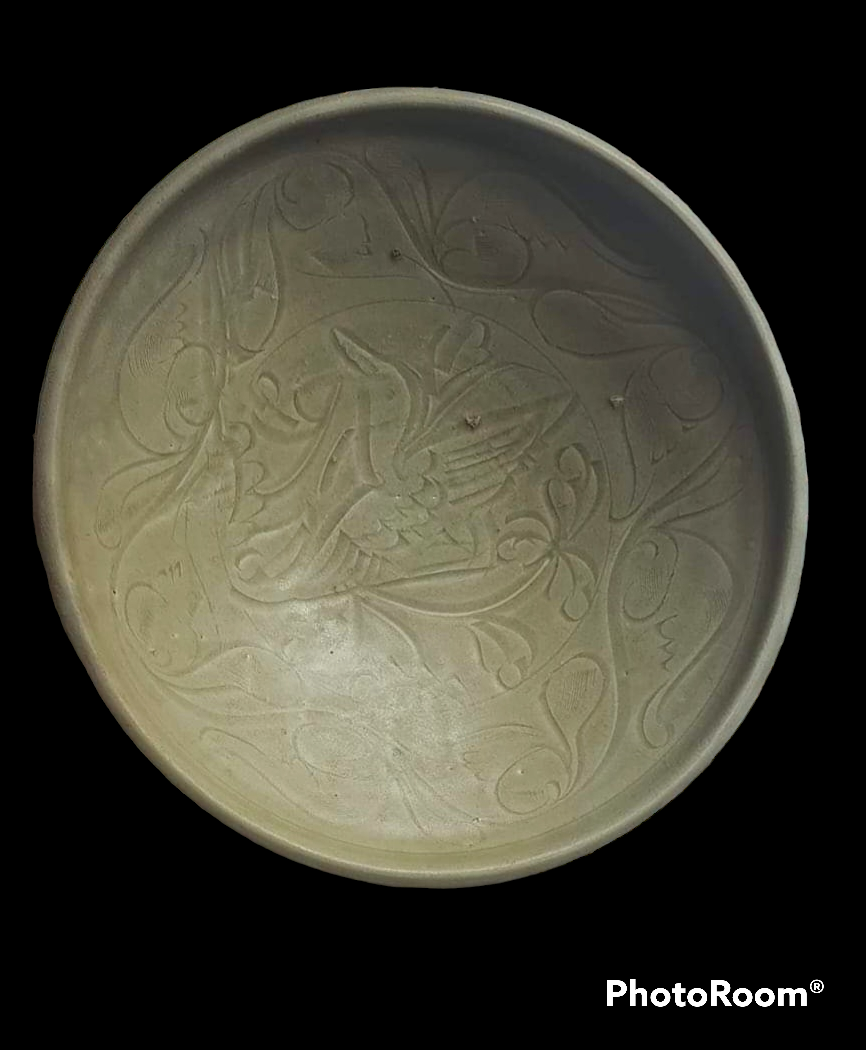 |
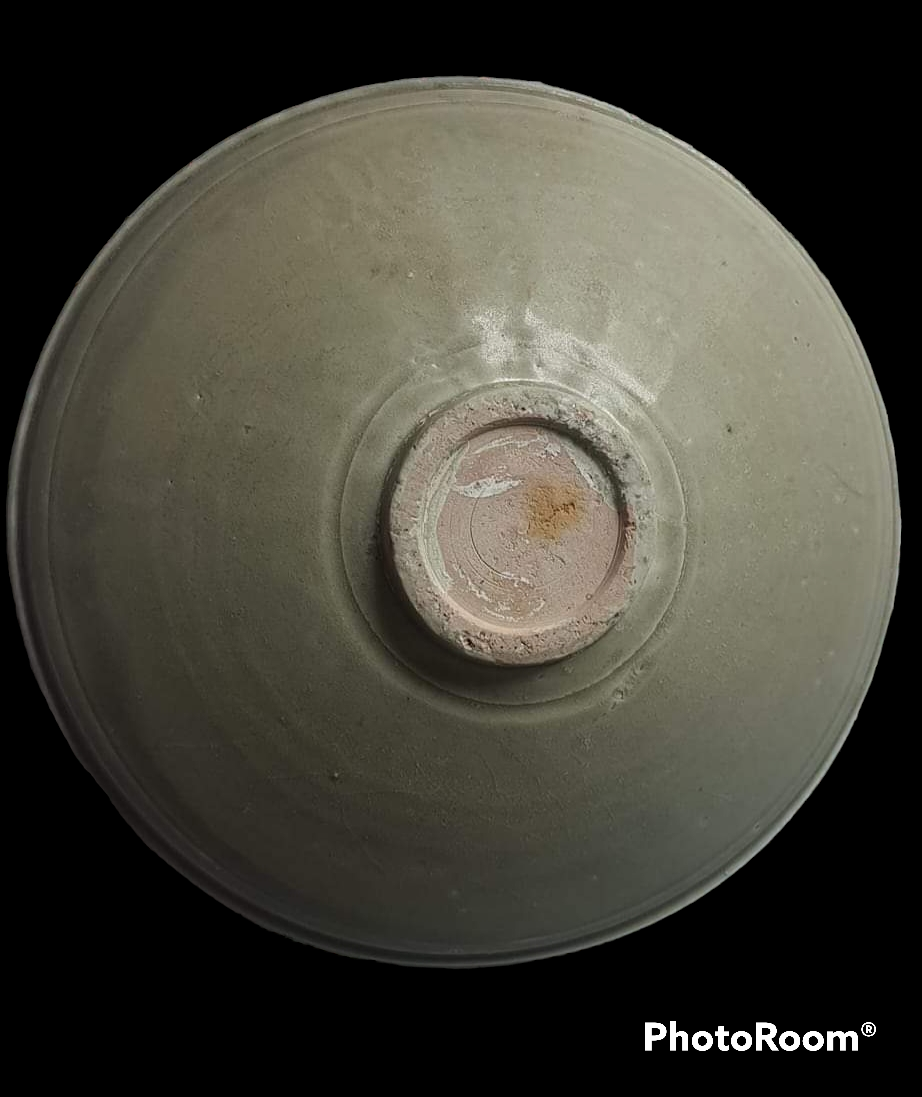 |
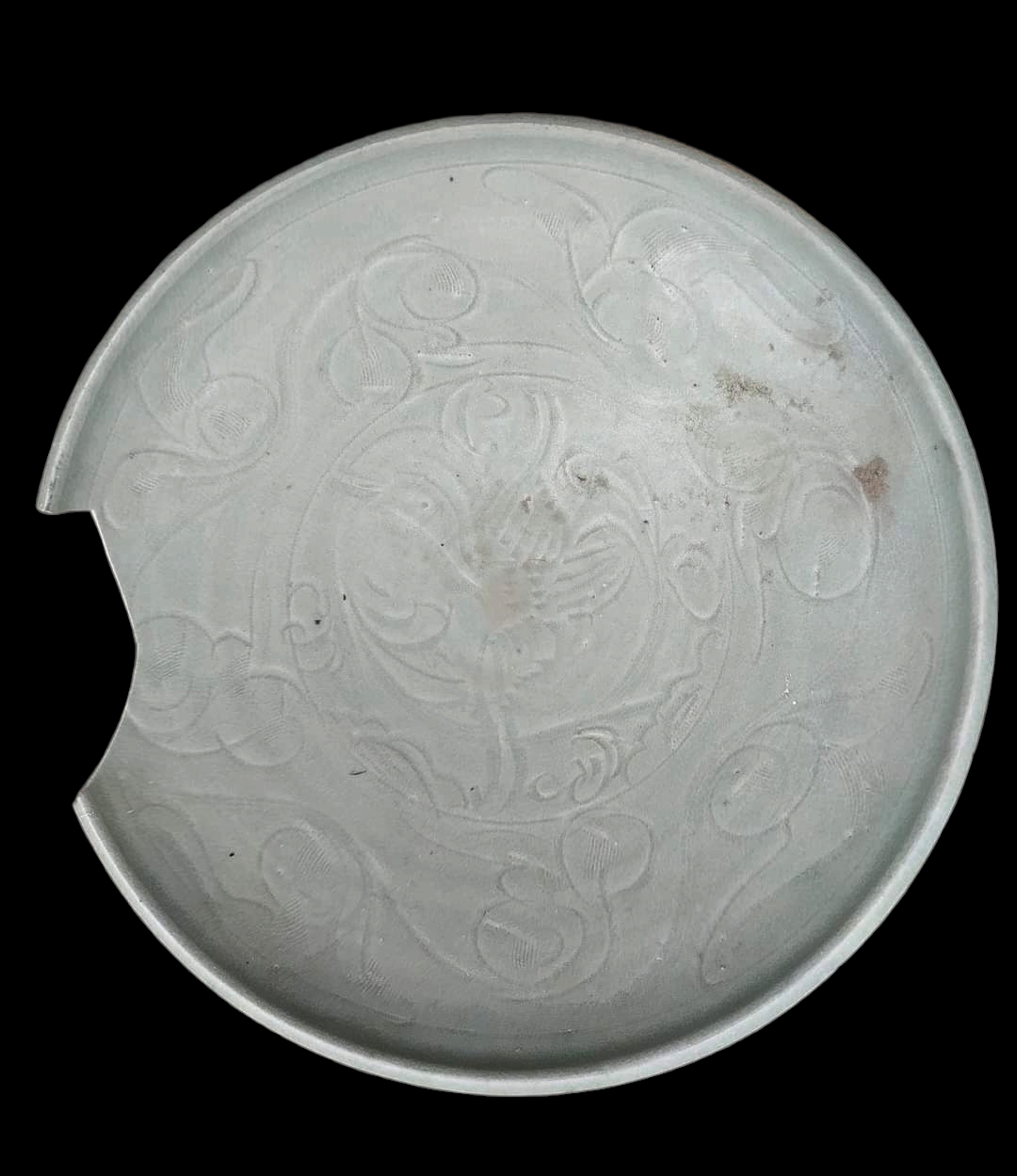 |
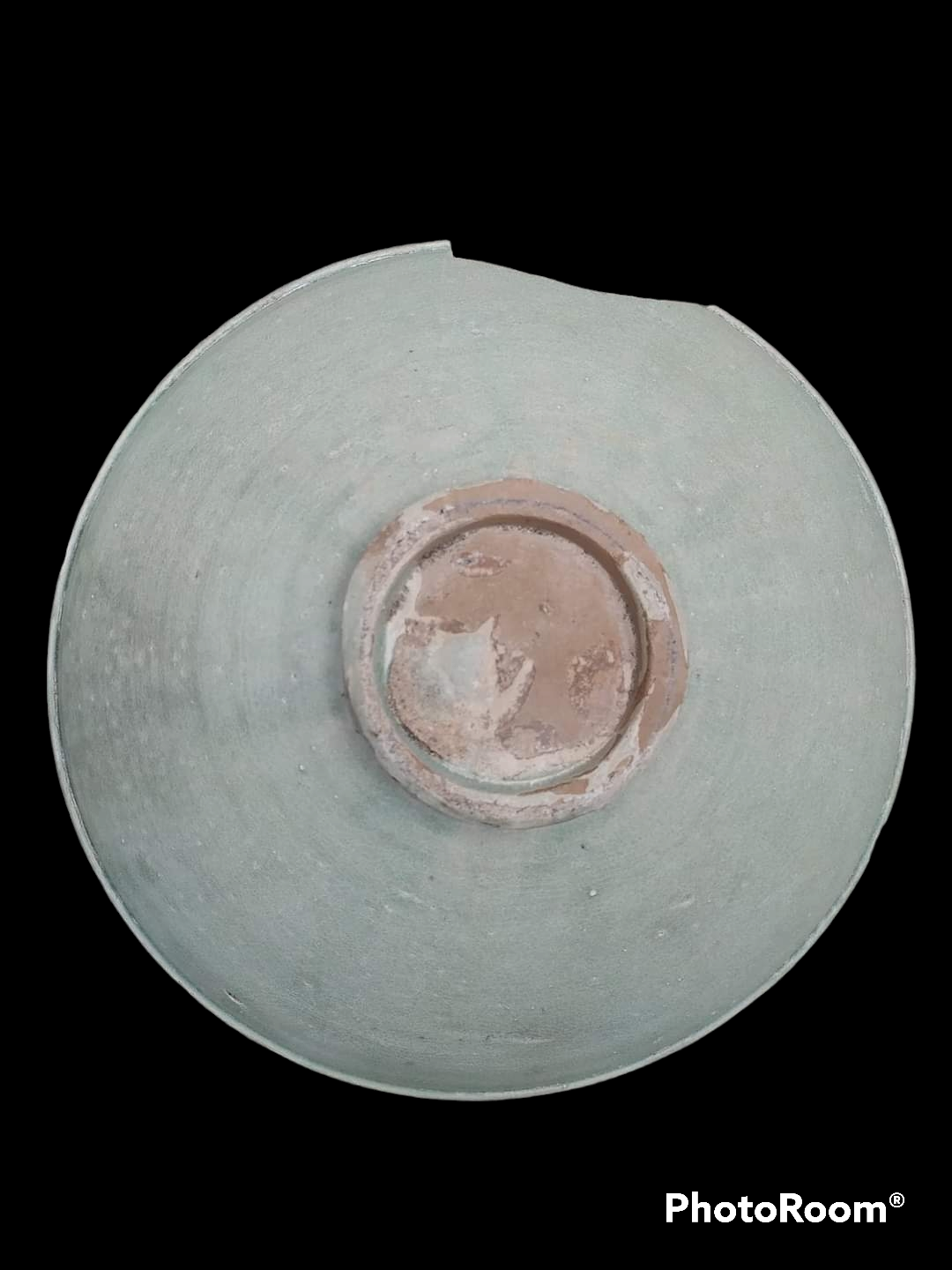 |
| Longquan Anfu kiln big bowls with carved wild goose in flight decoration | |
A very popular type of bowls/plates/dishes with lotus petal carvings on the exterior were introduced sometime around late 12th/early 13th century. The lotus petal has a raised ridge The vessels have thick foot and unglaze outer base. They continued to be produced during early Yuan period. During the second half of 13th century, a more refined version was introduced. It has more thinly potted wall, well trimmed thin foot and more slender carved lotus on external wall.
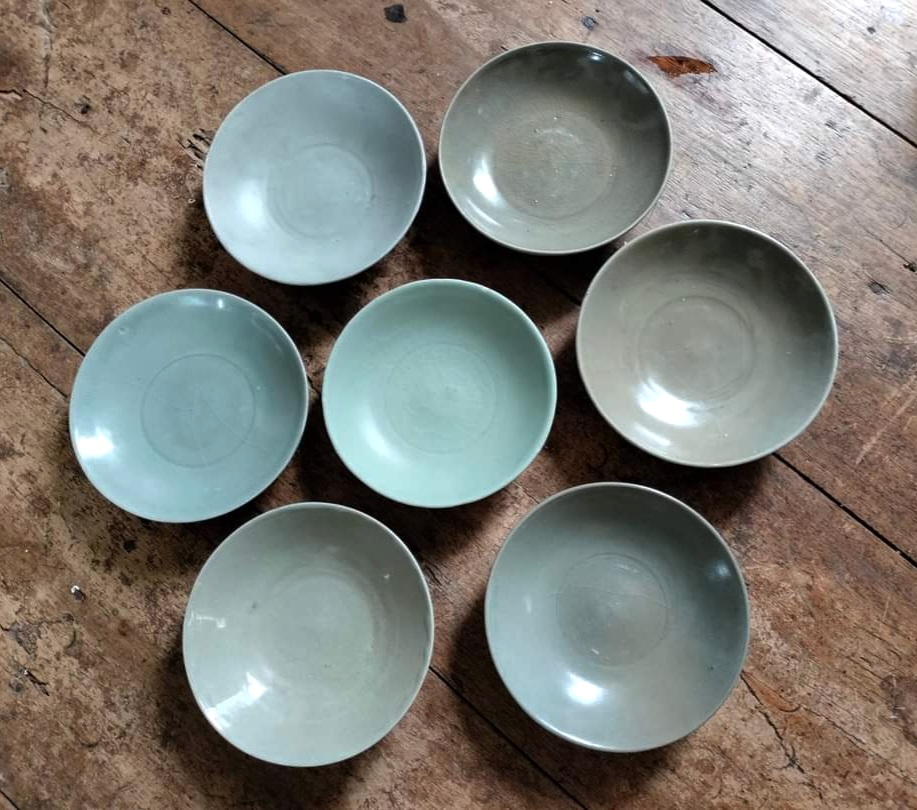 |
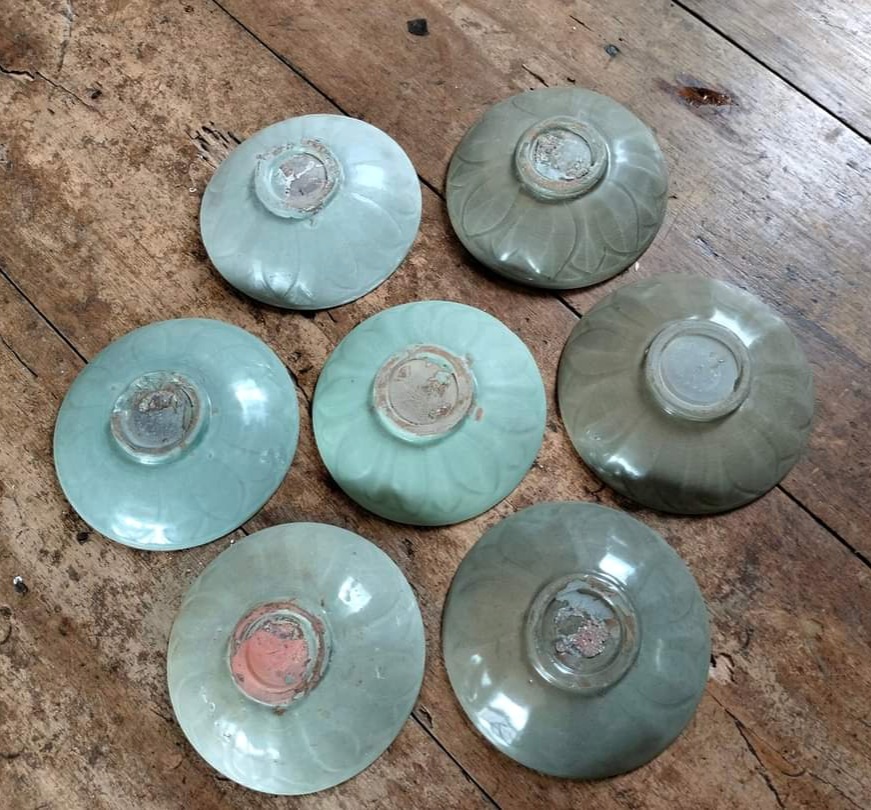 |
 |
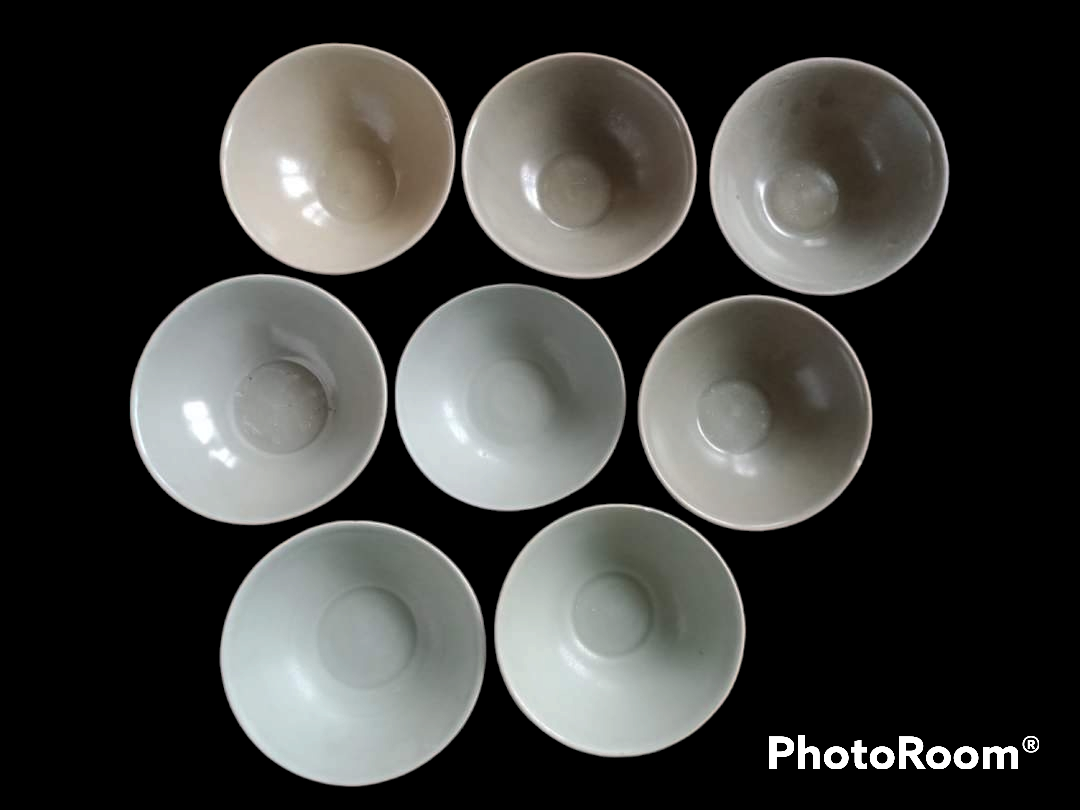 |
| Bowls/Dishes with carved lotus petals decoration | |
Late Southern Song/early Yuan (1225 - 1300 A.D) Longquan wares
Towards the end of mid Southern Song, Longquan potters introduced a new glaze composition and paste. The traditional lime glaze was replaced by a lime-alkali glaze. Lime-alkali glaze is high on viscosity and has a softer gloss. To simulate the jade like effect, the thickness of the glaze is thickened by the technique of multiple glazing. Many of the celadon pieces made during the Late Song to early Yuan pieces have multi-layer of glazes. The porcelain stone used for the vessel is mixed with "zijin" (reddish purple) clay. This new mixture enabled a high-quality thin and light body porcelain to be made. The general view is that the Longquan potters learnt and adopted the technology from the Southern Song Guan wares.
So far, the earliest dated examples are two vases with bow string lines from the grave of Cheng Daya (程大雅) in Zhejiang Songyang (浙江松阳). The grave is dated to 1st year of Qingyuan (庆元元年) ie A.D 1197. The vases showed sign that two layers of glaze were applied.
Two types of high quality celadon were produced. One has a thick glaze with white biscuit (with smaller amount of zijin clay", and the second a guan type thick glaze with thinner black biscuit (a higher amount of zijin clay used). The late Southern Song to early Yuan period was the golden period of Longquan celadon production. The vessels are graceful, with fine and relatively thin potting. The thick jade like glaze is of excellent quality The soft powdery green (fenqing (粉青)) and the plum green (meizhiqing (梅子青)) represented the two most successful glaze which are much treasured by collectors. Both types are fired under reduction firing atmosphere. The plum green is fired at a higher temperature and has clear and transparent jade-green colour. The fenqing is fired at a lower atmosphere and the glaze is less transparent and has a softer glow. During the Southern Song and early Yuan phase, the fenging glaze predominated while plum green was more commonly found during the Yuan period. Those with yellowish or orangy glaze was the result of un-intended oxidizing atmosphere which occurred during firing process.
Compared to the earlier phase, there was greater variety of vessels . New form of vases, bowls, washers, dishes, ewers, water droppers and incense burners were introduced. They are generally small in size. The most common decorations are raised relief bow string line, lotus petals and applique motifs such as fish peony, dragon, phoenix, flower and etc. There was little use of carved/incise technique as the thick more opaque glaze would conceal the motif.
Carved lotus petals on vessels was particularly popular during this phase. They were also found on dishes which came in variety of sizes of dishe. The interior is either plain or decorated with applique motif such as twin fishes, dragon, tortoise or flower on the interior base. Their popularity persisted and continued to be produced in large quantity for export during the Yuan period. It is difficult to differentiate those produced in Late Southern Song to early Yuan phase. Generally, the quality deteriorated after early Yuan period. It has a thicker foot and the finishing tends to be more rough.
The most exciting finds from Batang Kumpeh must be the large number of varied forms of Longquan wares from this period.
Washers, bowls/dishes with carved lotus petals and jarlets constituted the bulk of the vessels recovered. From Chinese sources, a washer was found in a burial from Zhejiang Shaoxing, datable to 1241 A.D. A Longquan lotus petal bowl was recovered from a grave at Zhejiang Lishui datable to 1275 A.D.
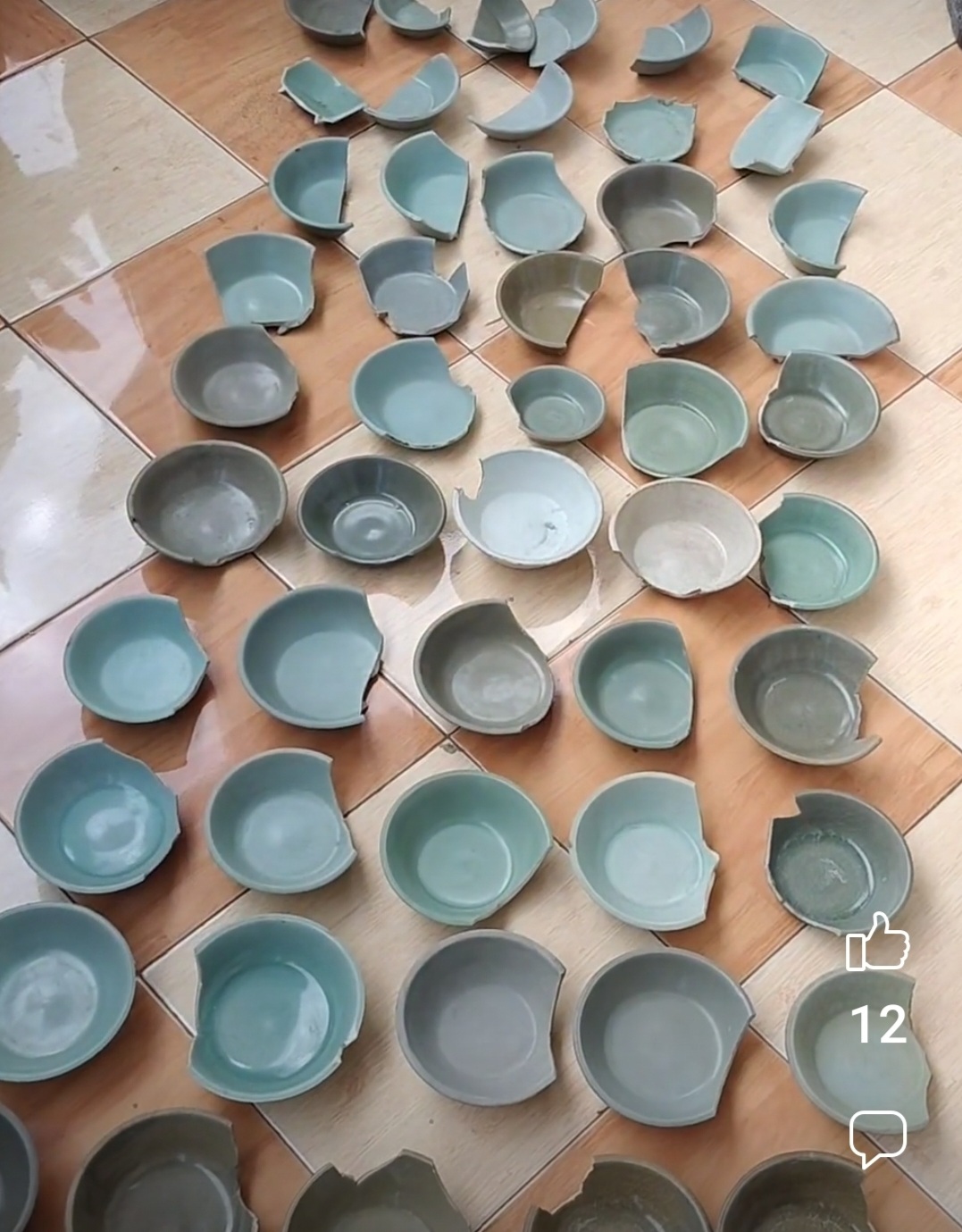 |
|
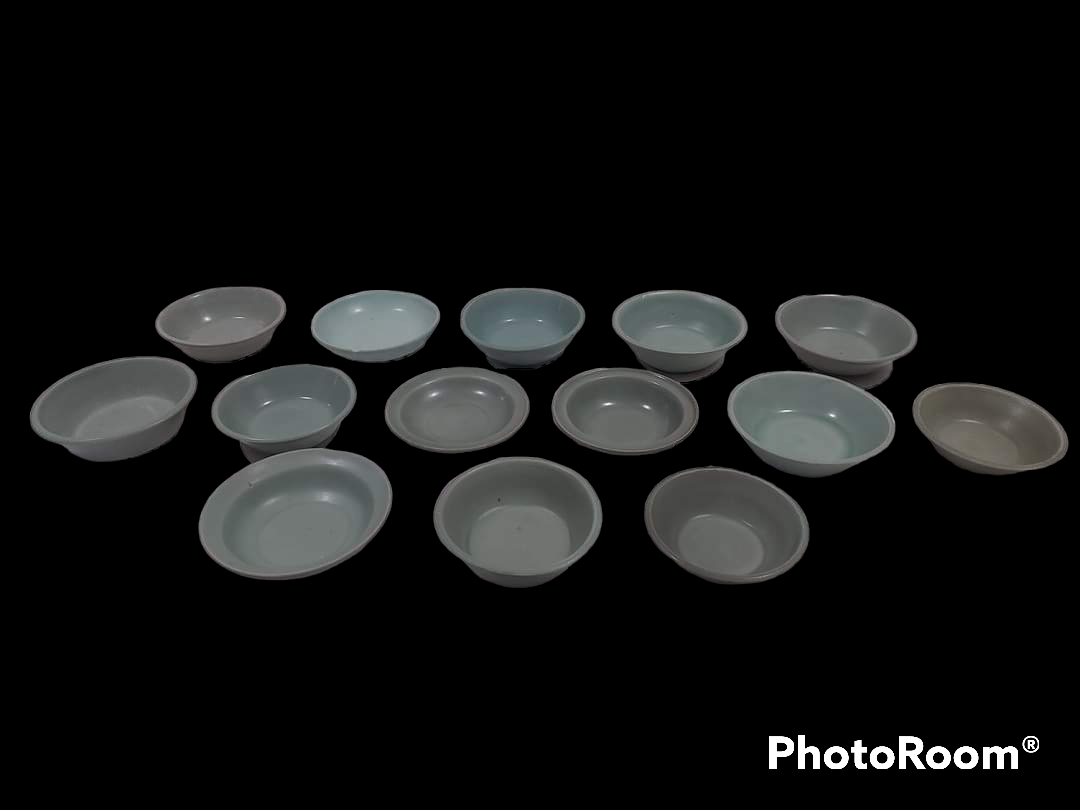 |
|
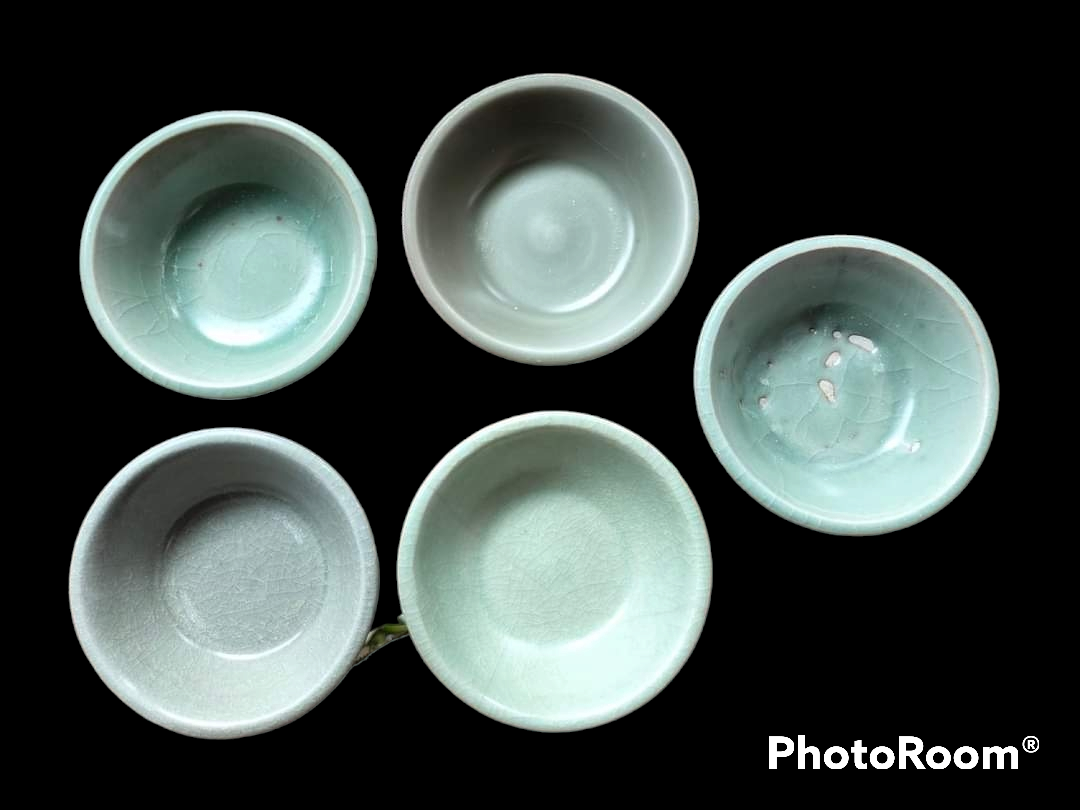 |
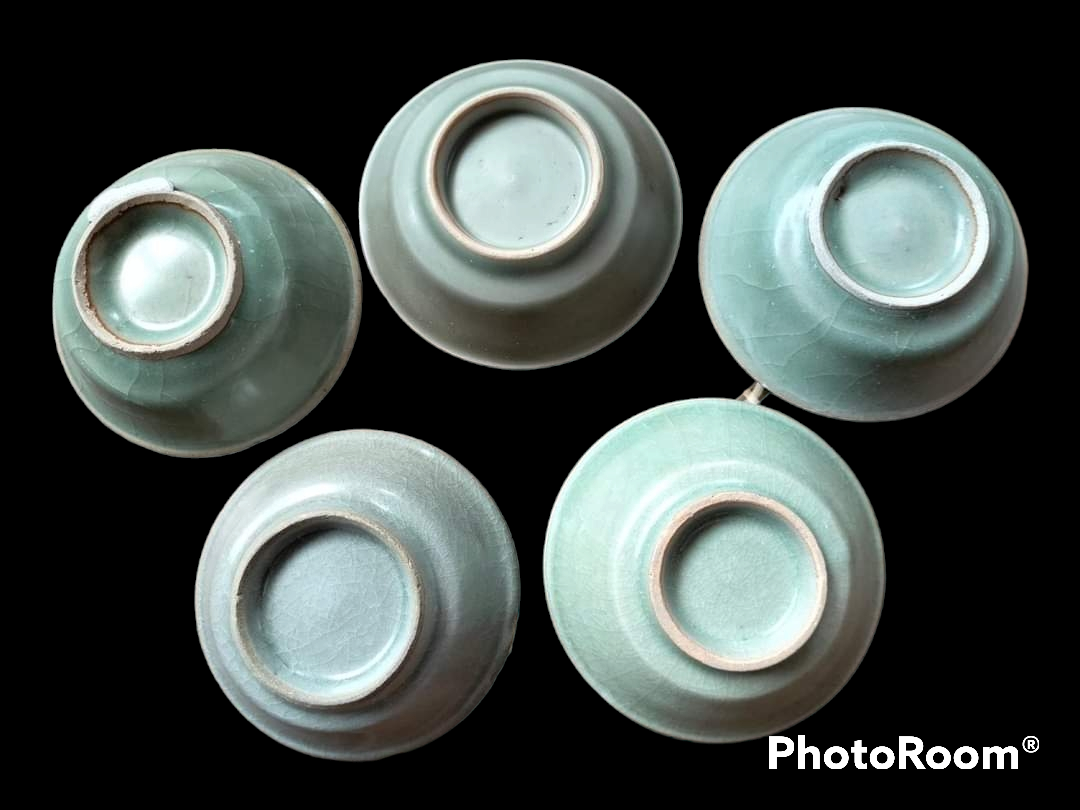 |
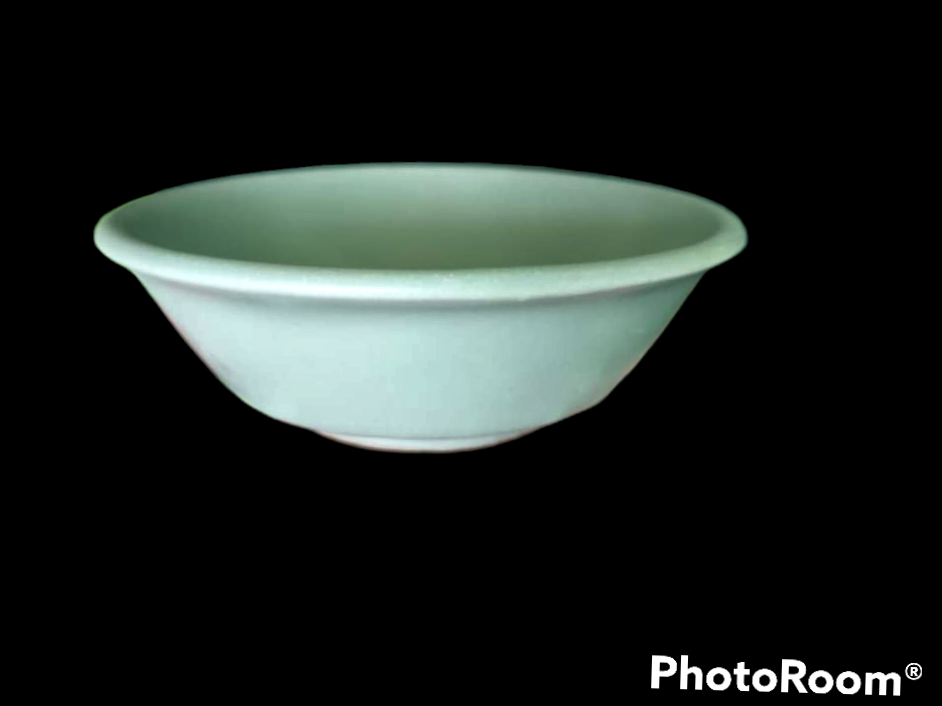 |
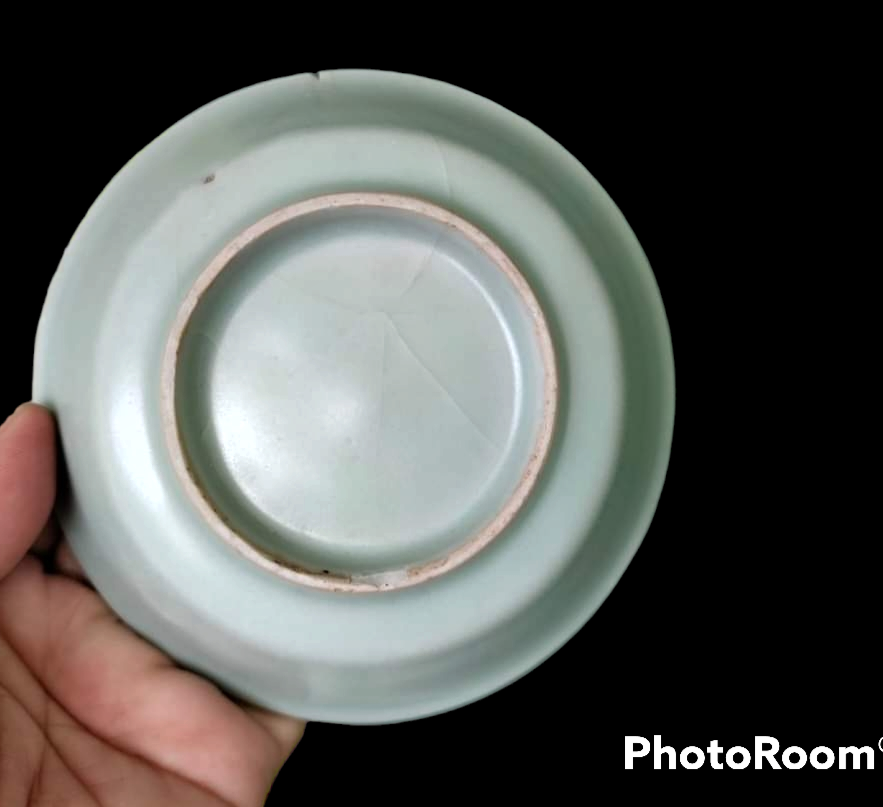 |
 |
 |
| Washers of different shade of glaze colours and sizes | |
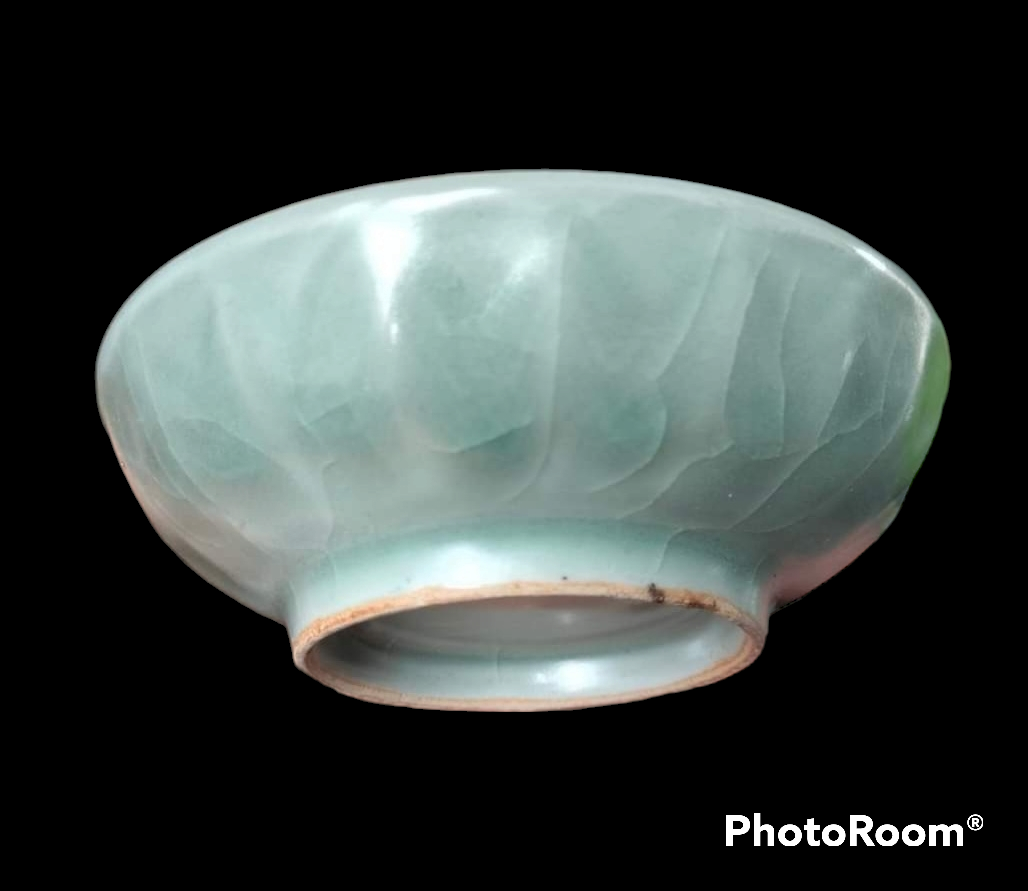 |
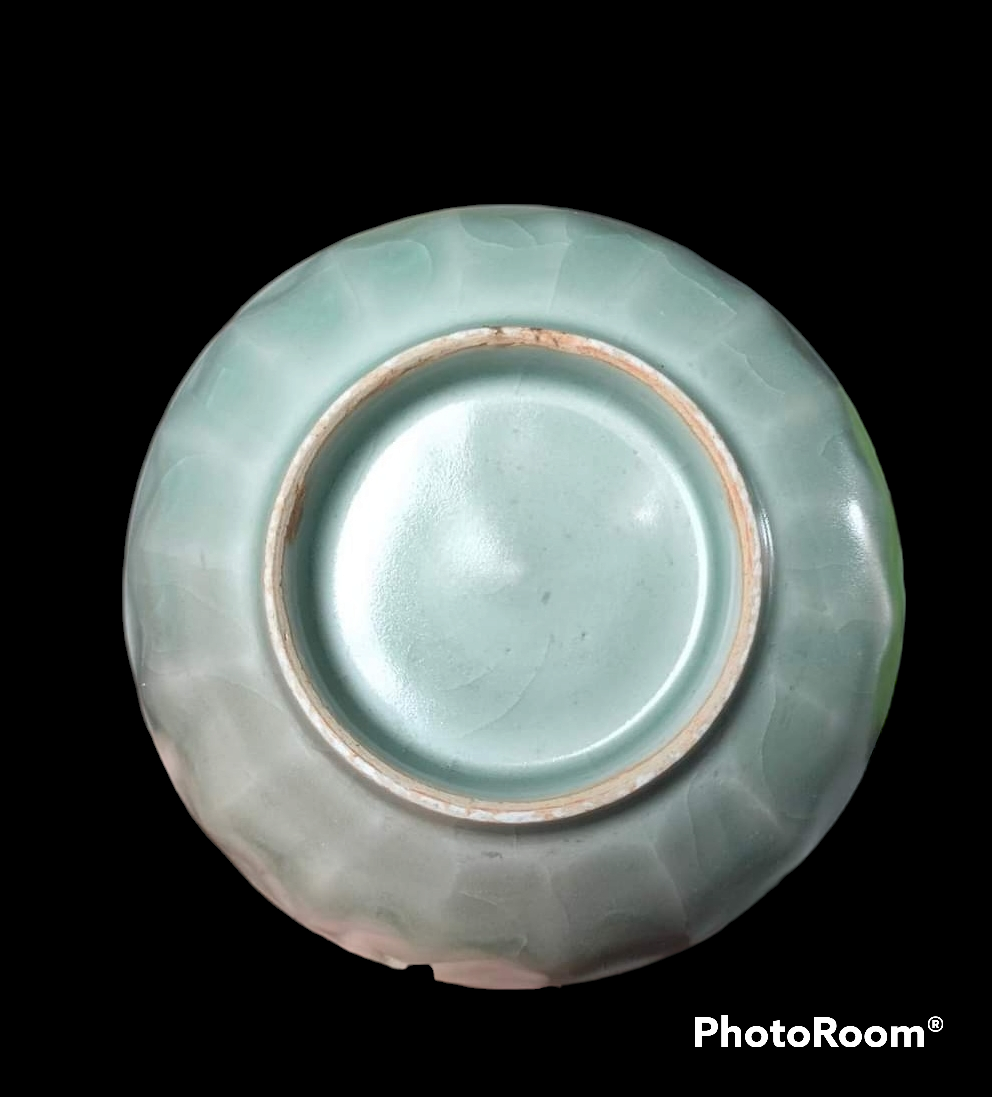 |
 |
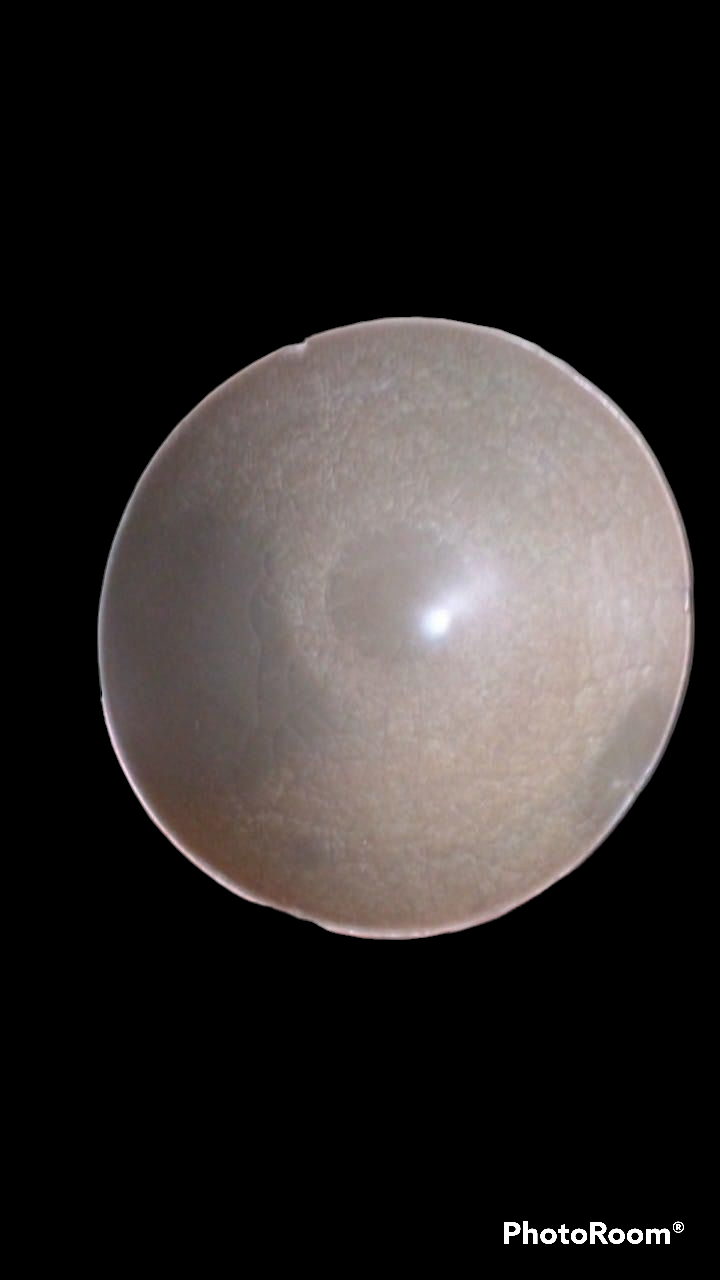 |
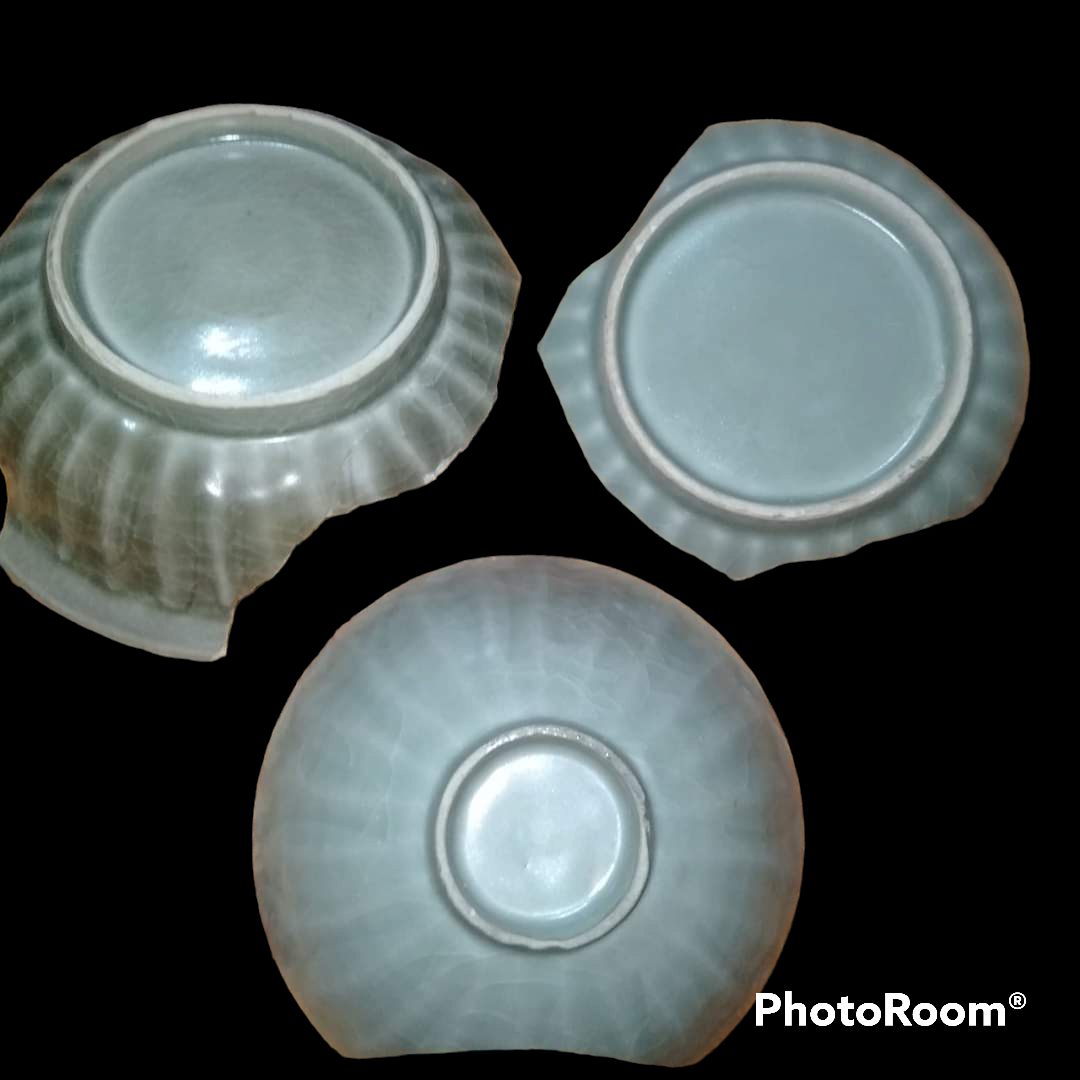 |
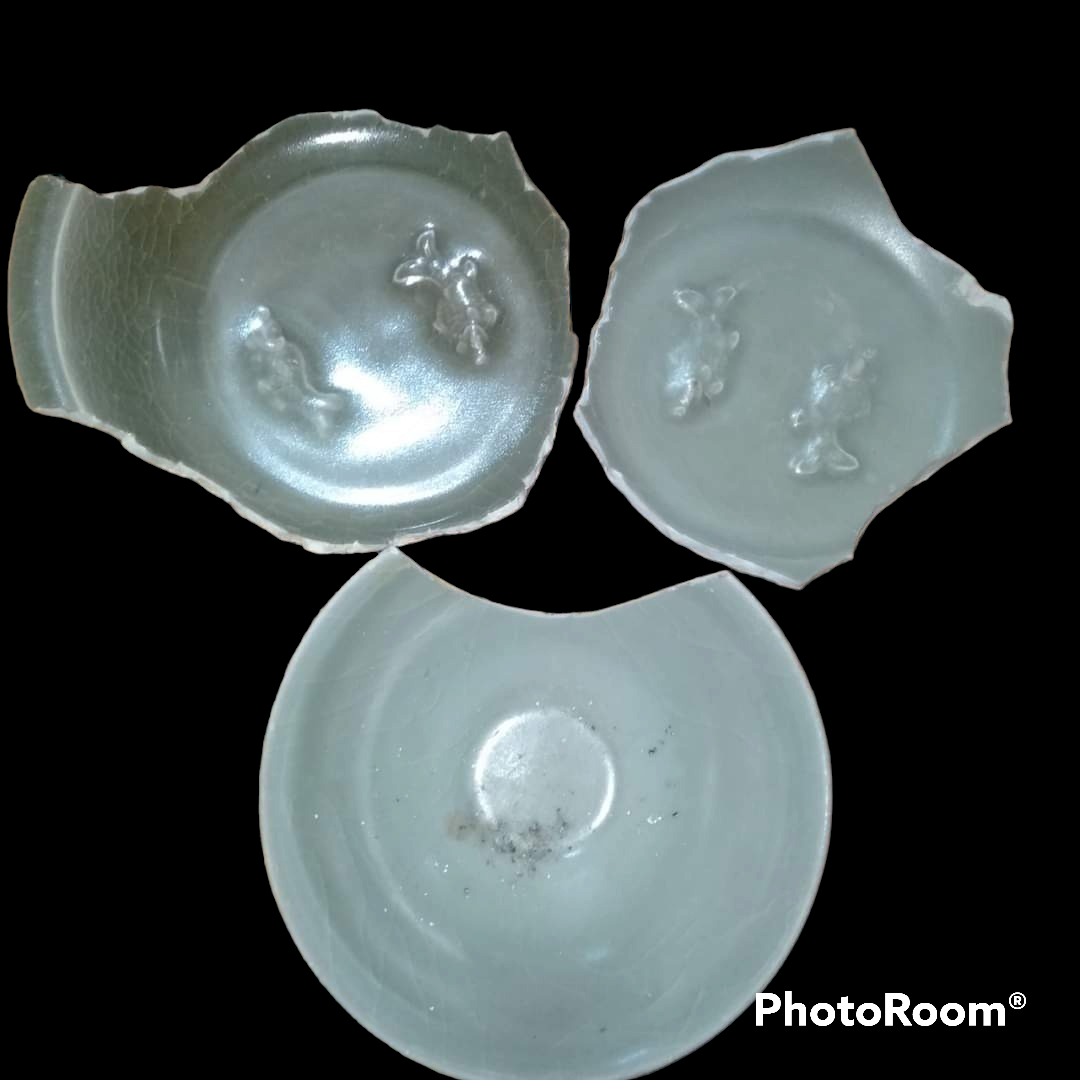 |
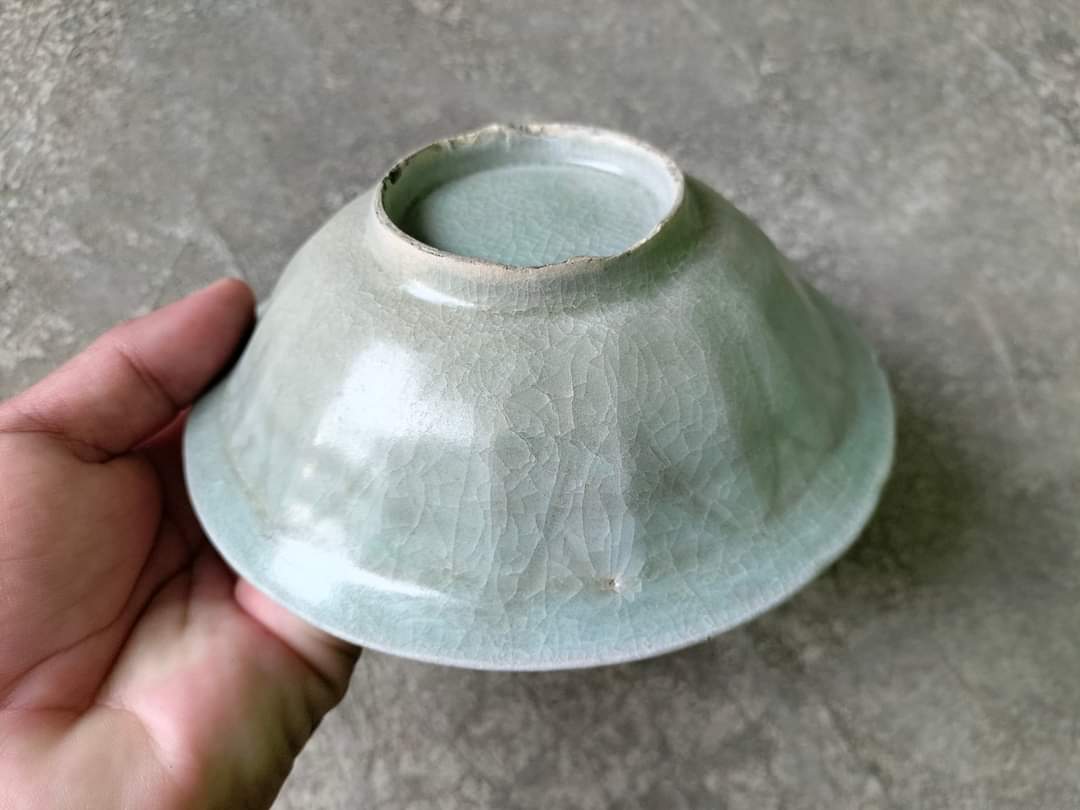 |
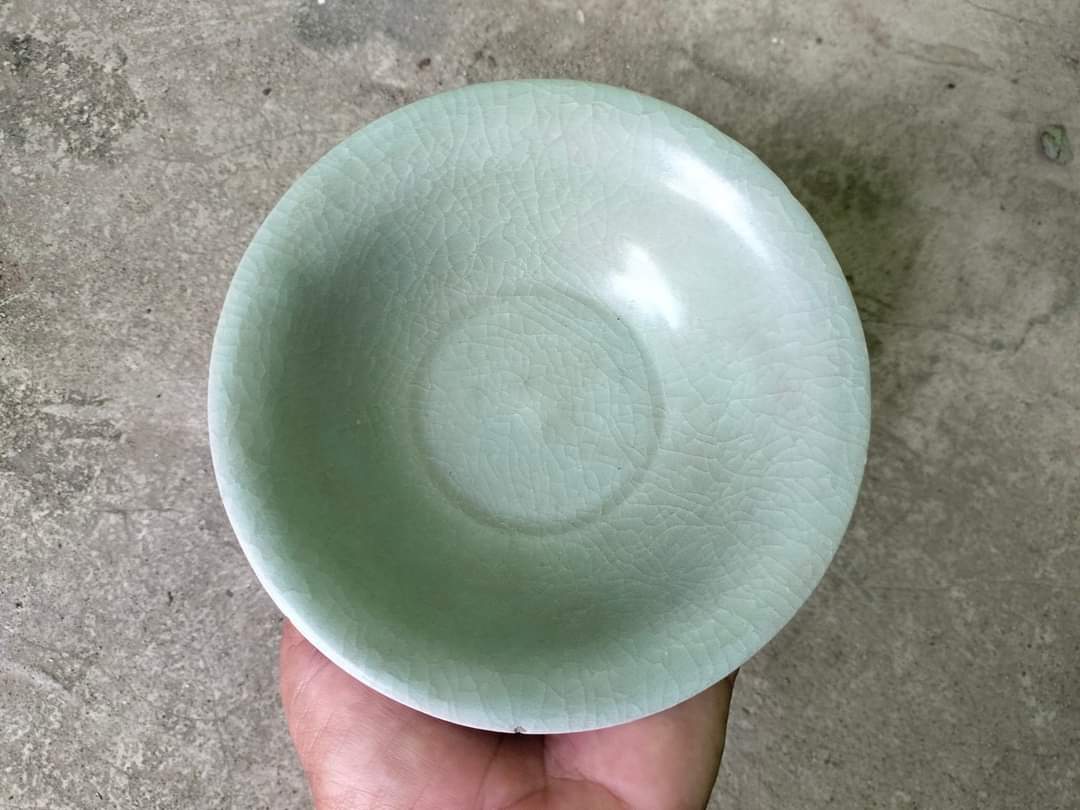 |
| Various bowls and dishes with carved lotus petals decoration | |
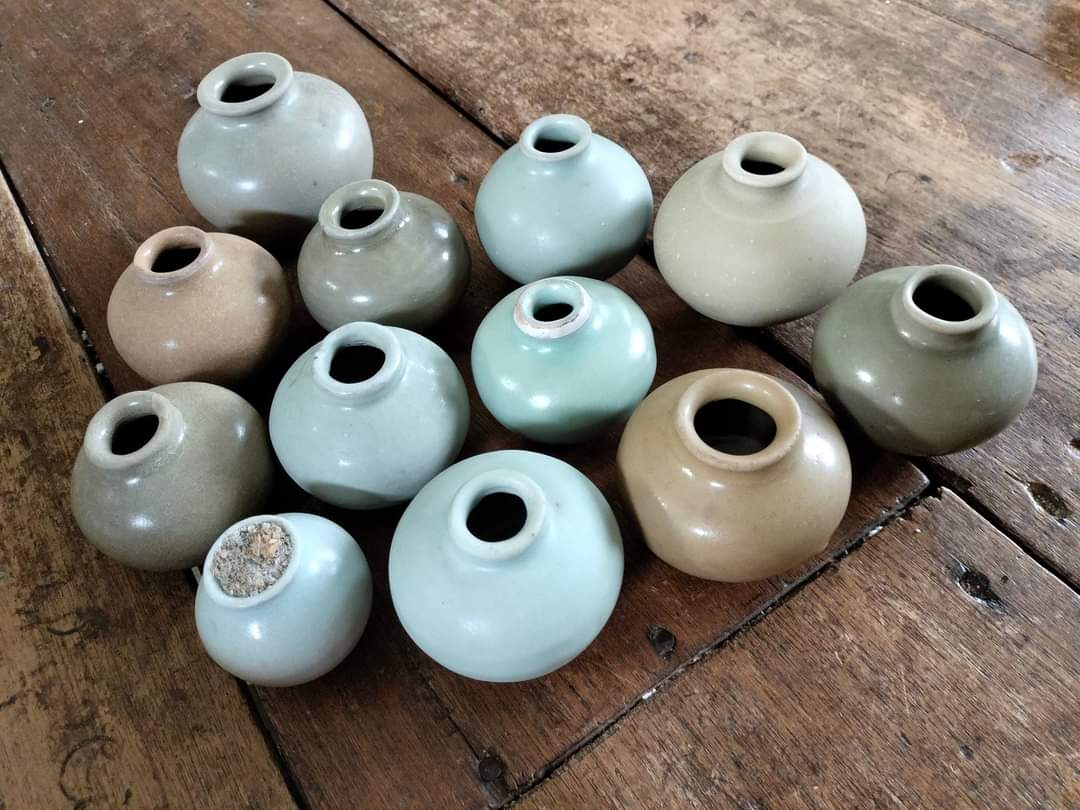 |
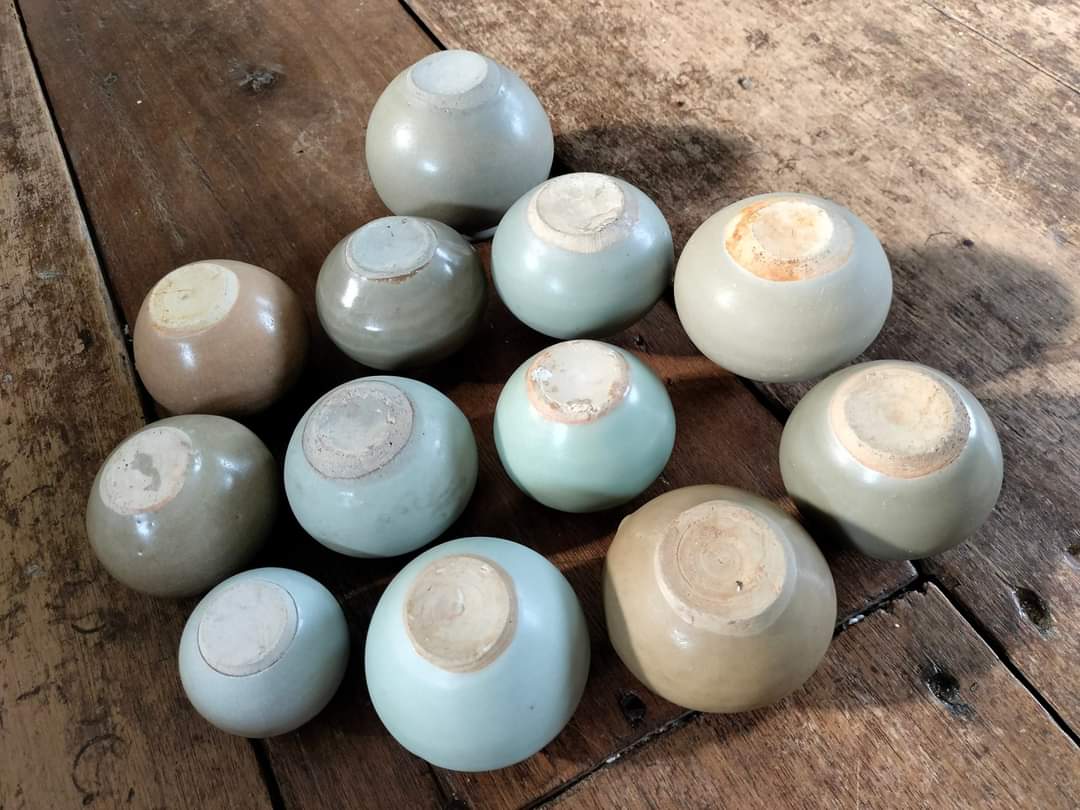 |
| Longquan jarlets with various shades of glaze colour | |
 |
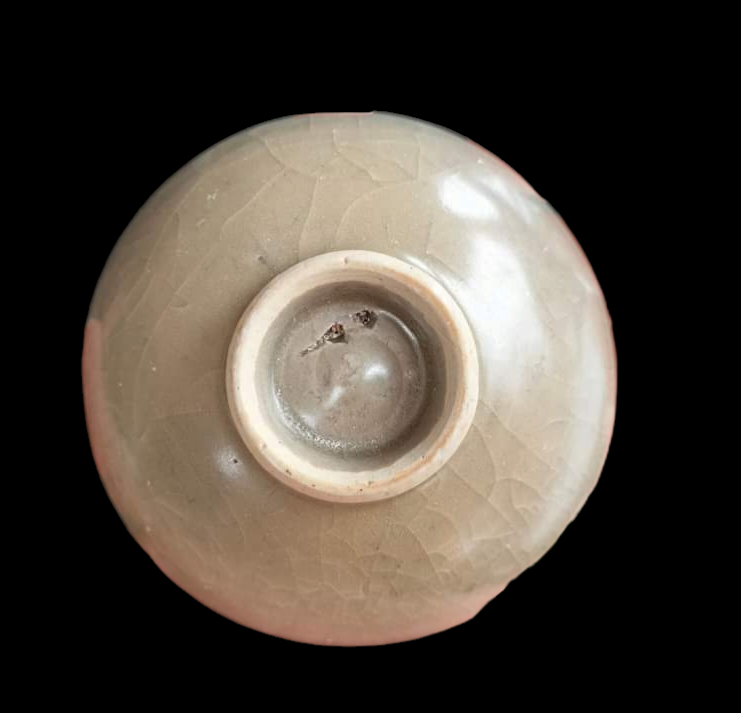 |
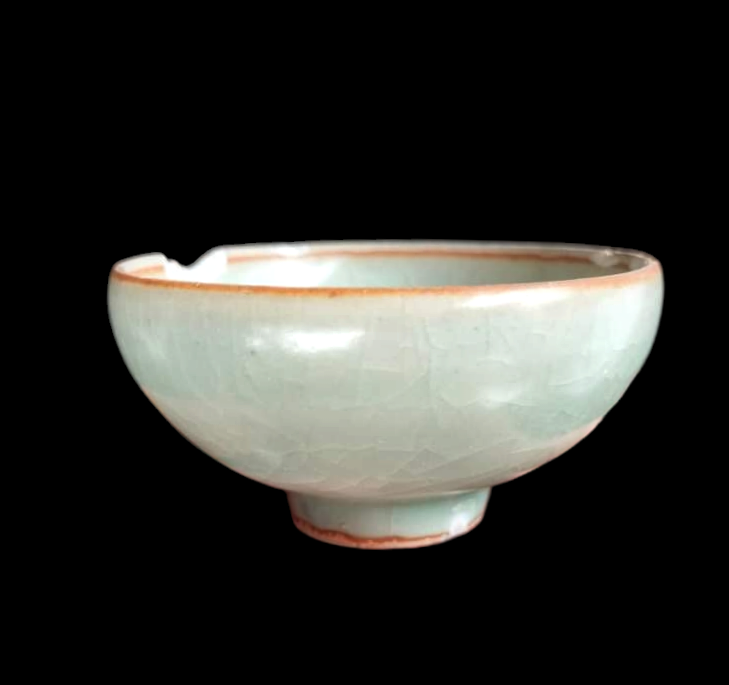 |
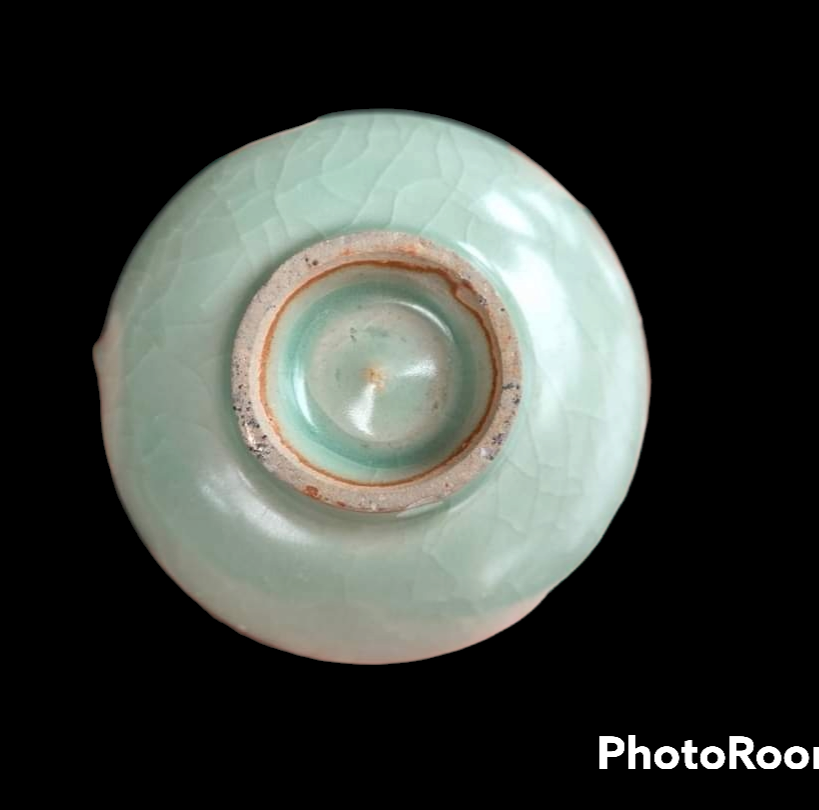 |
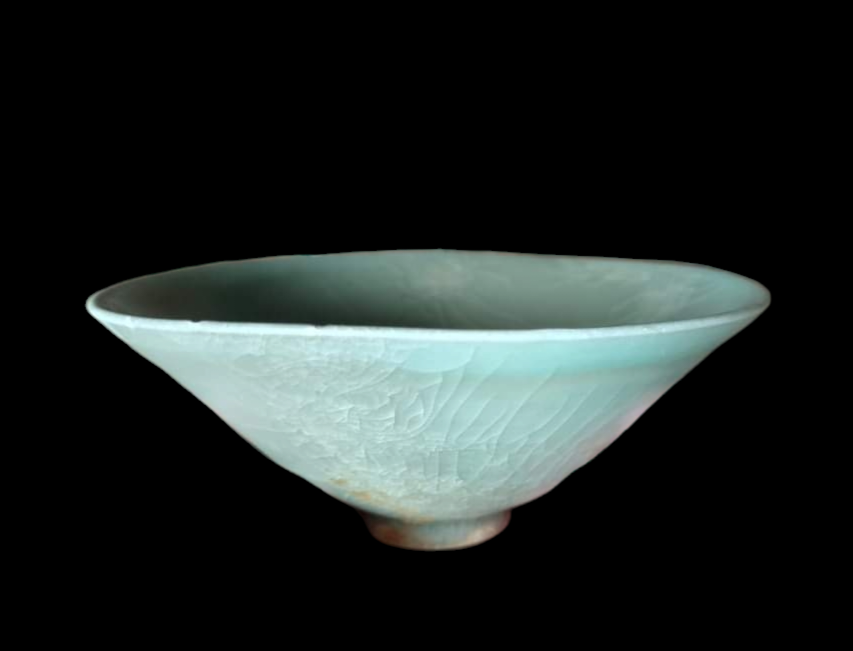 |
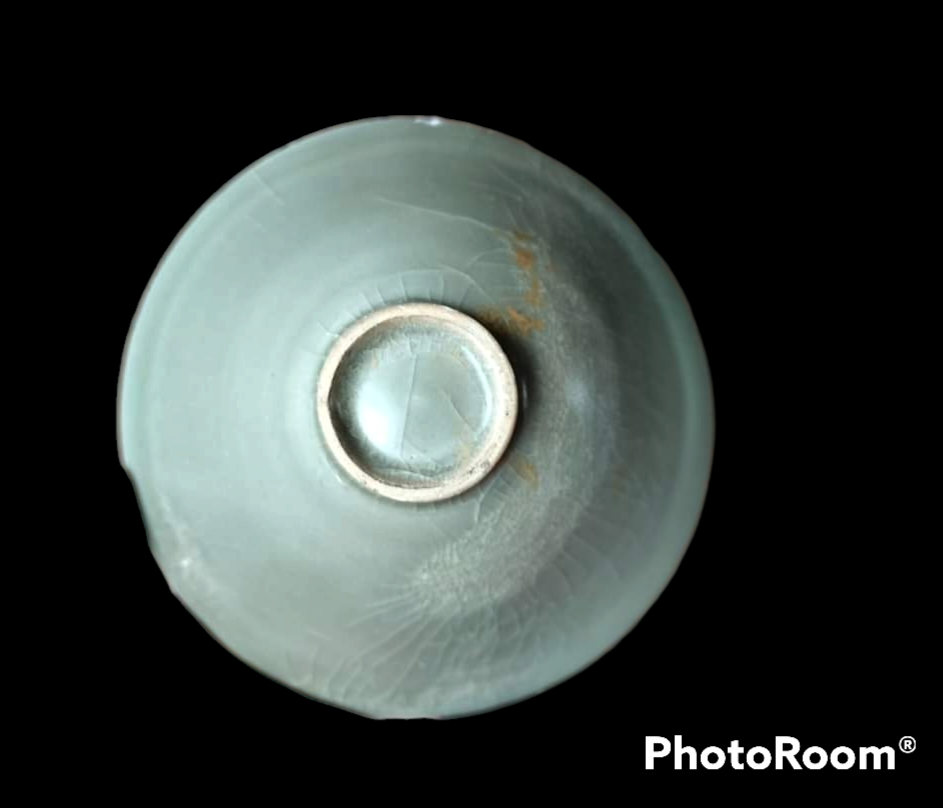 |
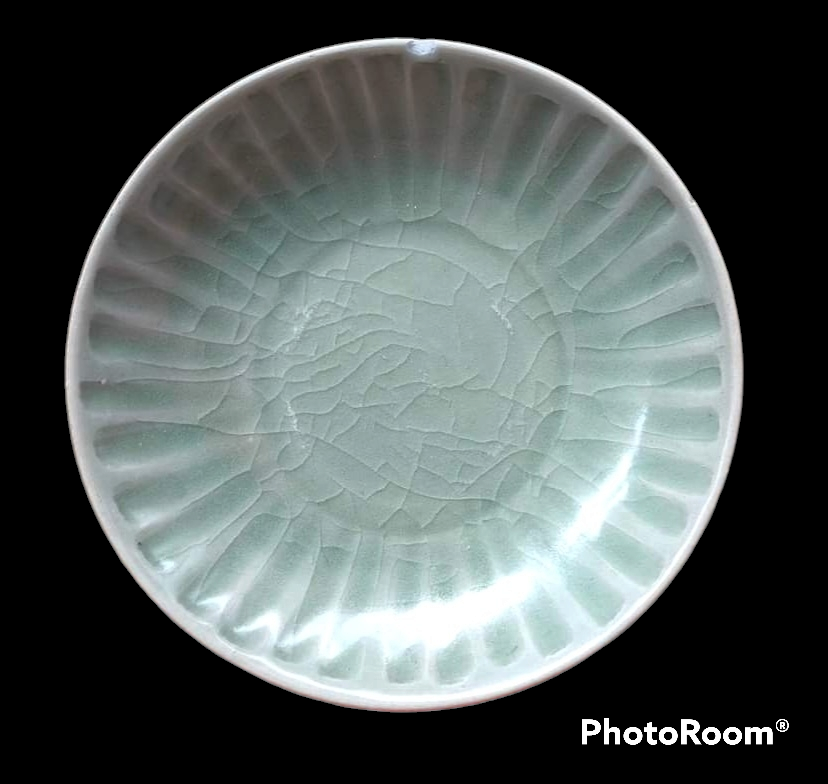 |
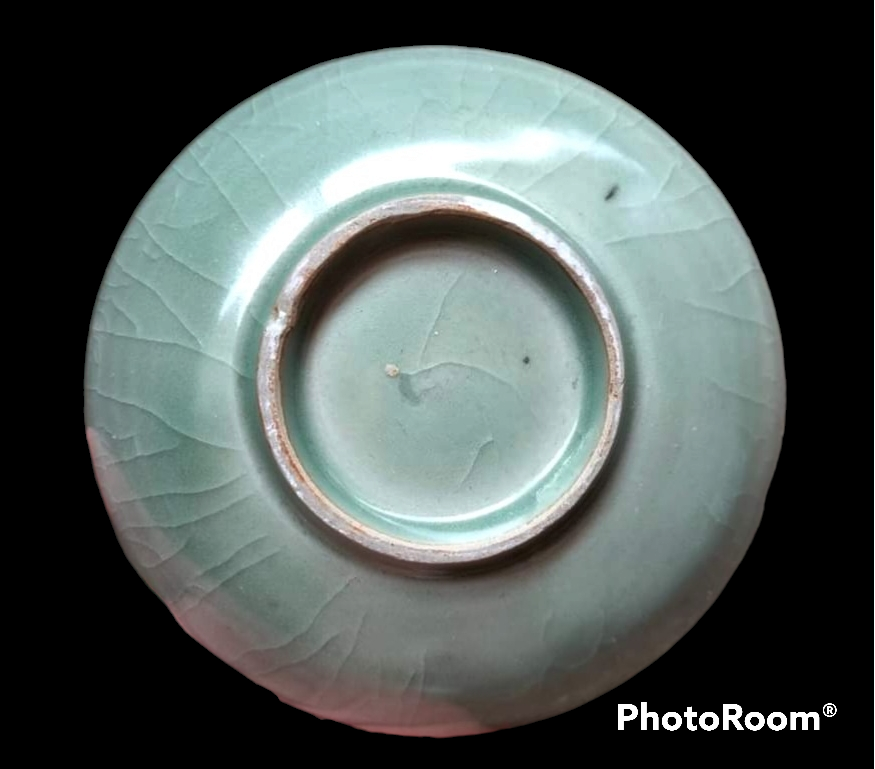 |
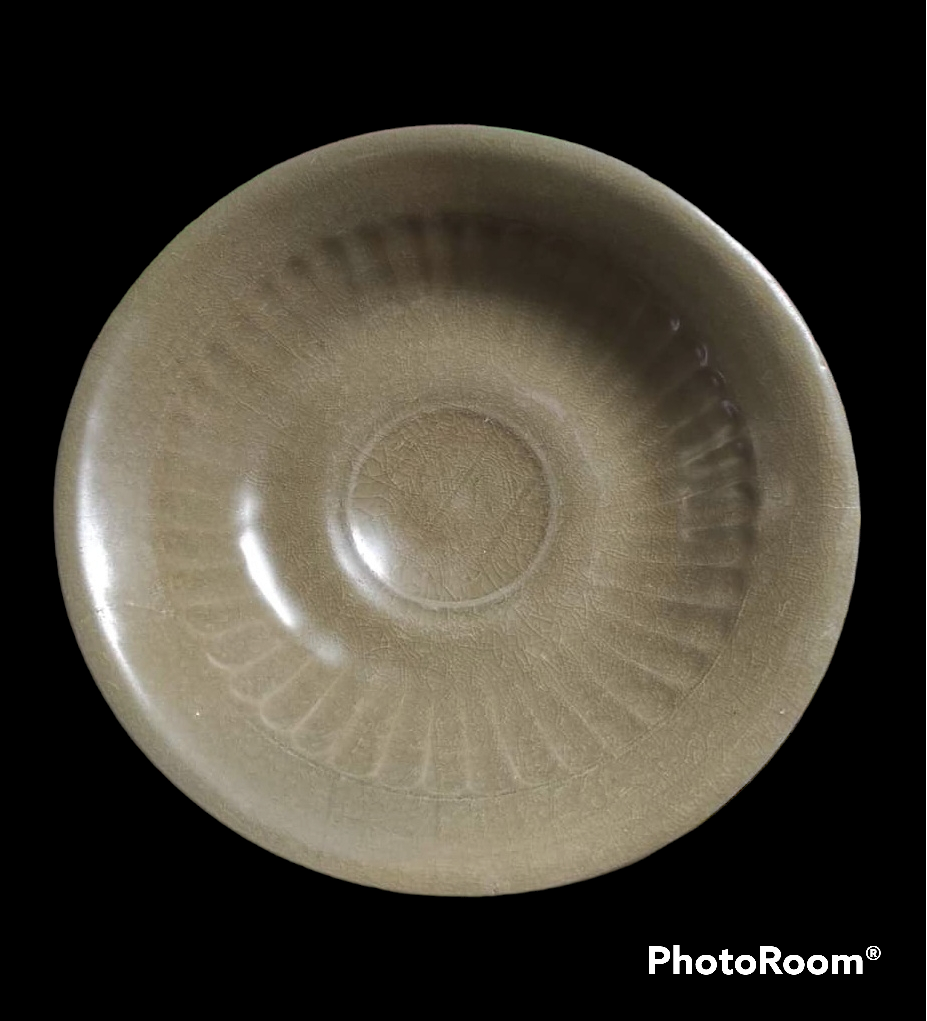 |
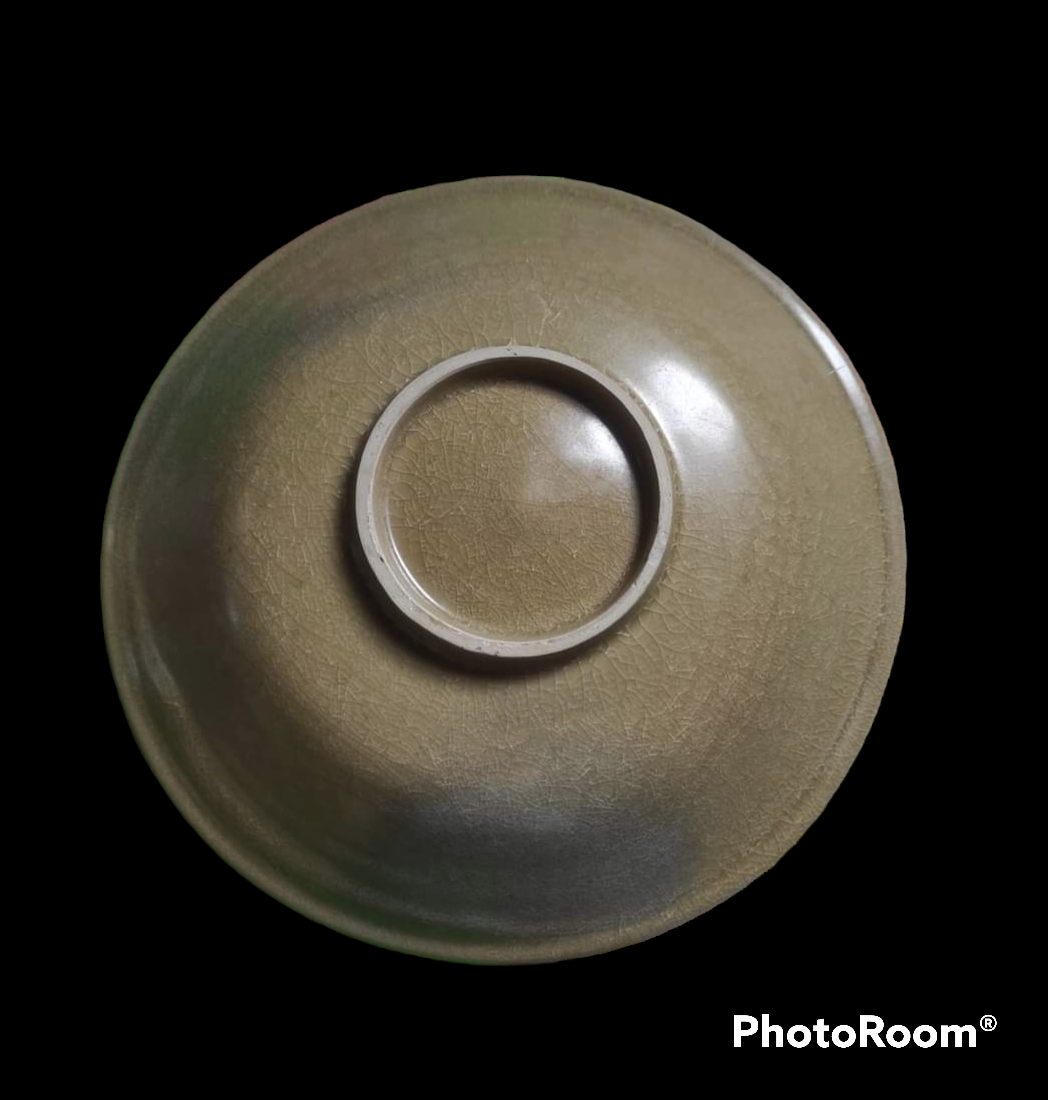 |
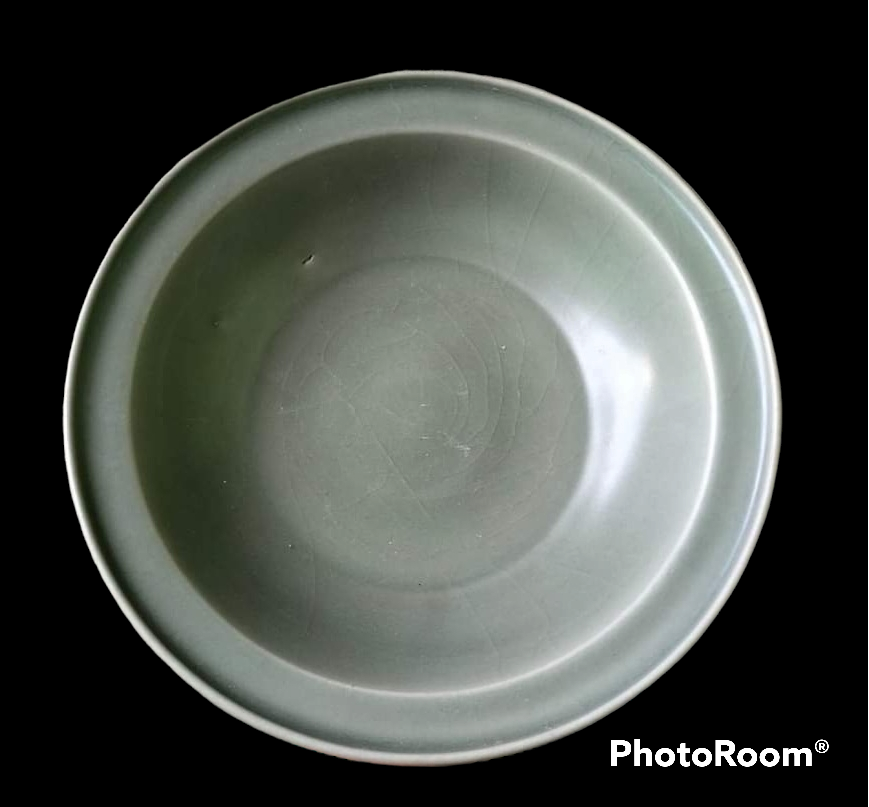 |
 |
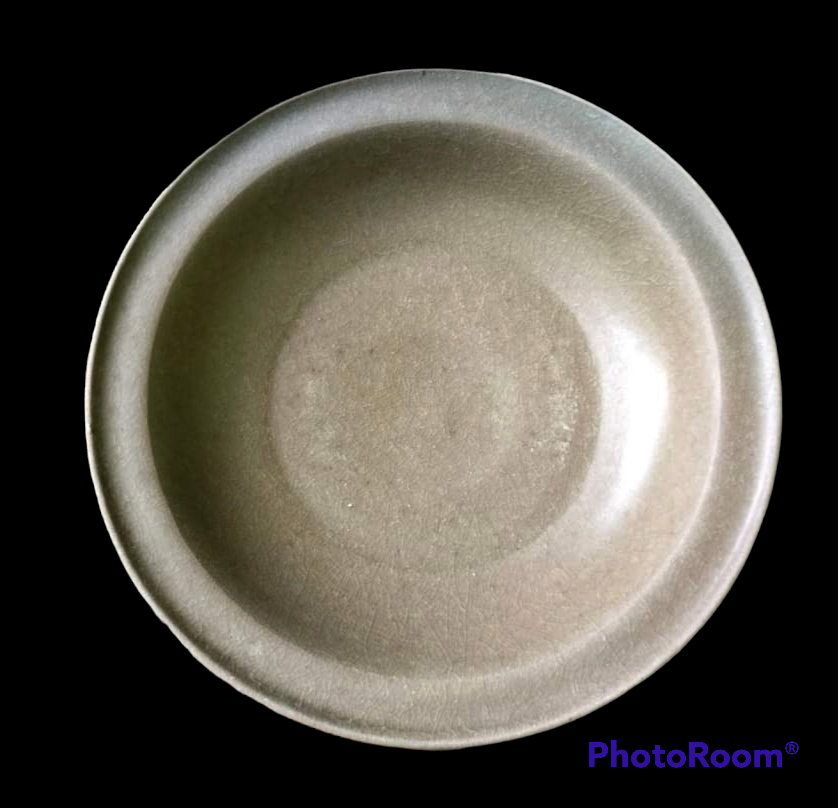 |
 |
| More examples of bowls and dishes | |
There are significant numbers of Longquan dishes with applique fishes. Among them, there are few with the fishes in biscuit form and there was a rare fragment with added iron-brown reed decoration.
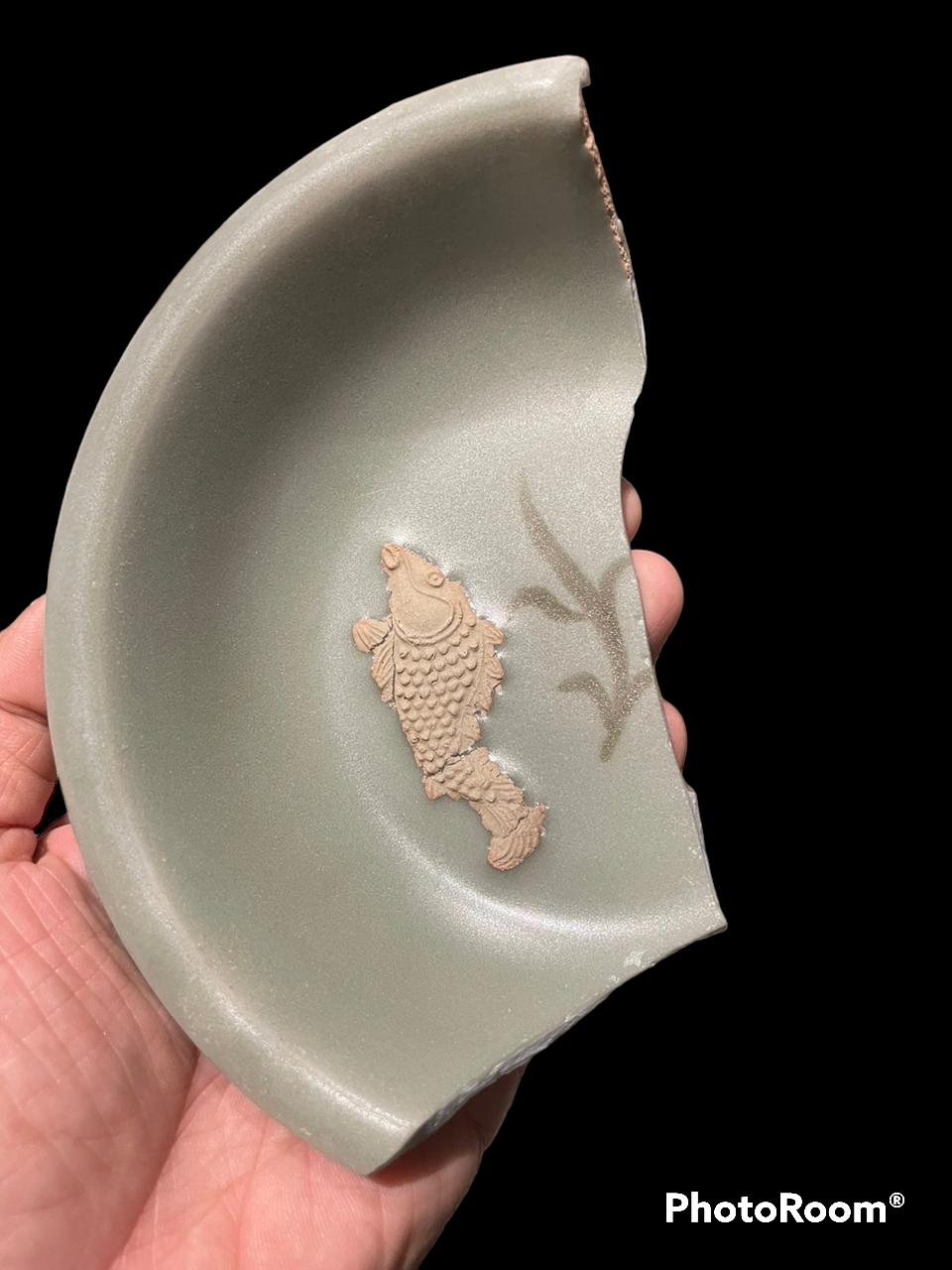 |
|
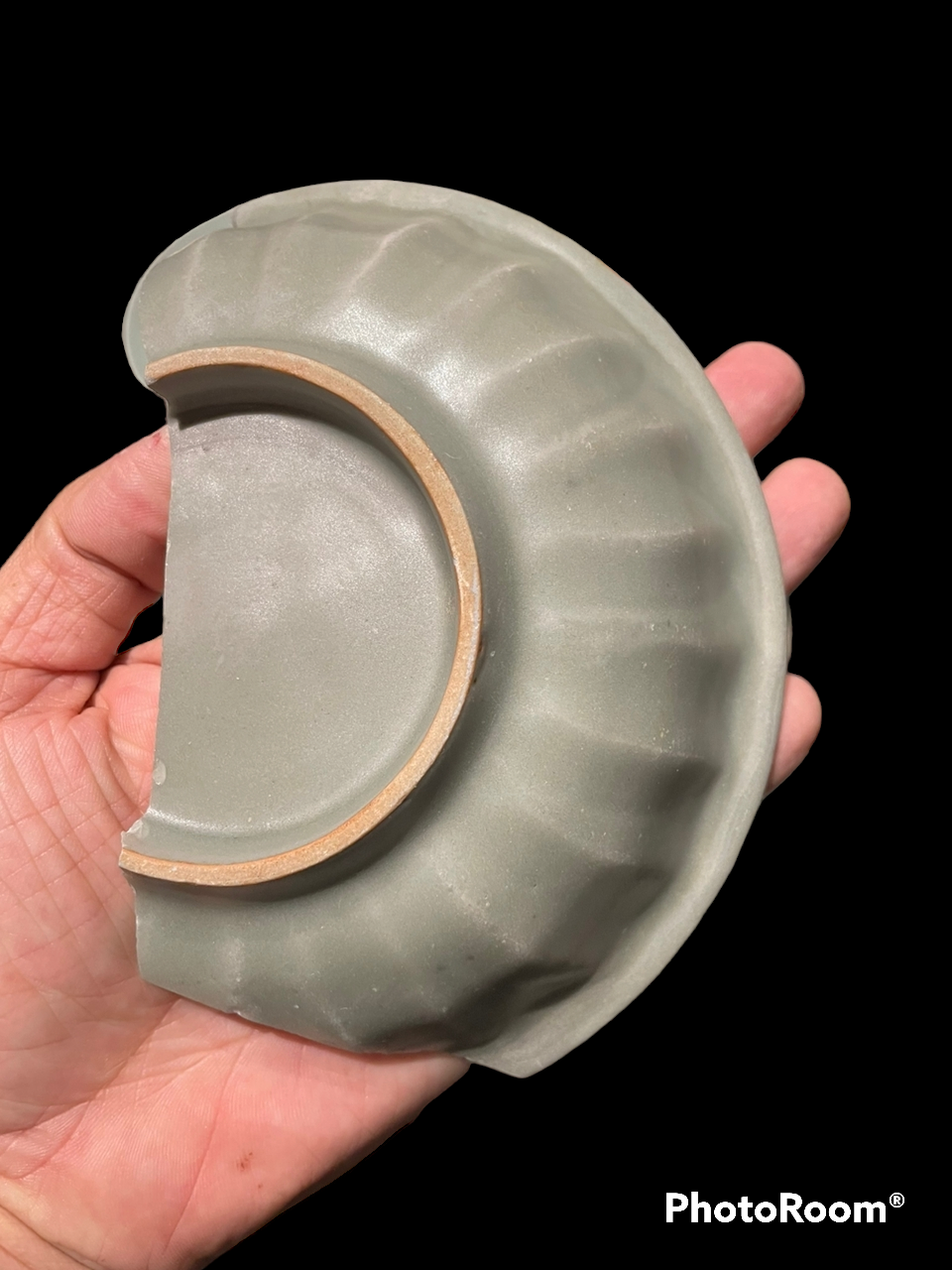 |
|
| A rare example with biscuit form fishes further decorated with iron-brown painted reed. | |
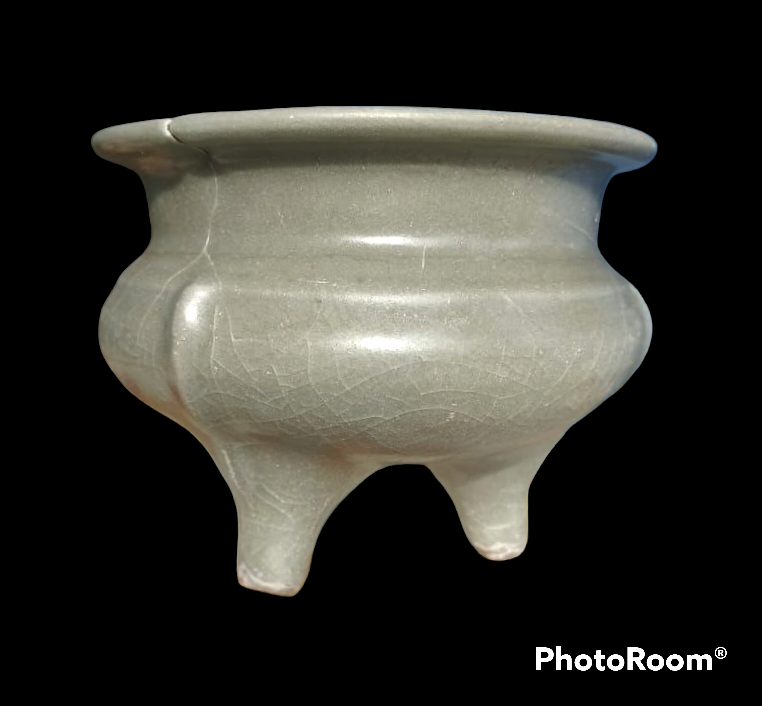 |
|||
 |
|||
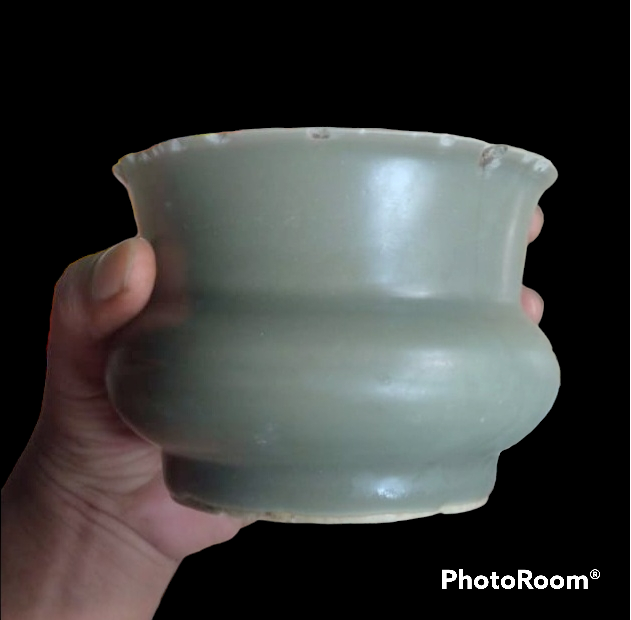 |
|||
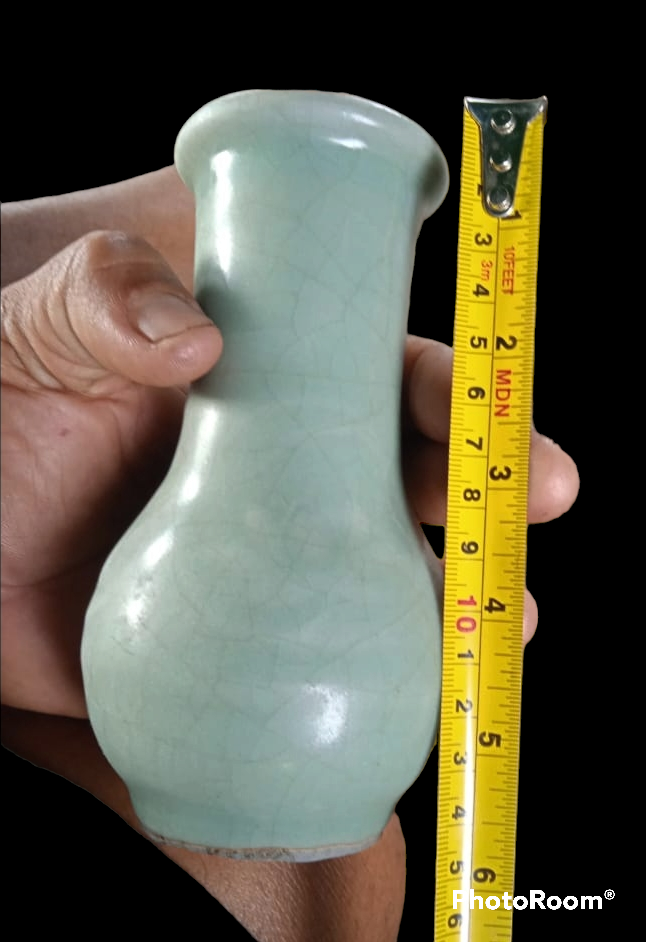 |
|||
 |
|||
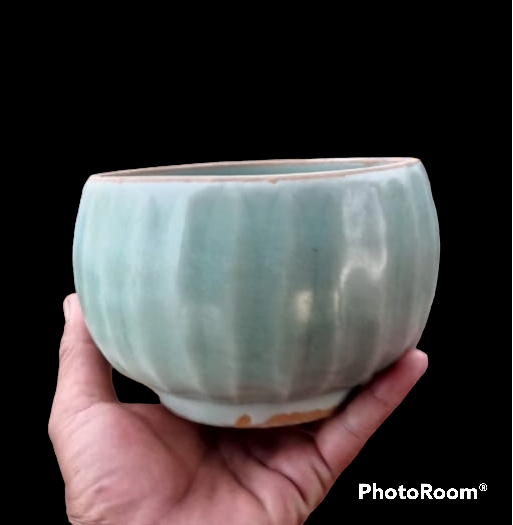 |
|||
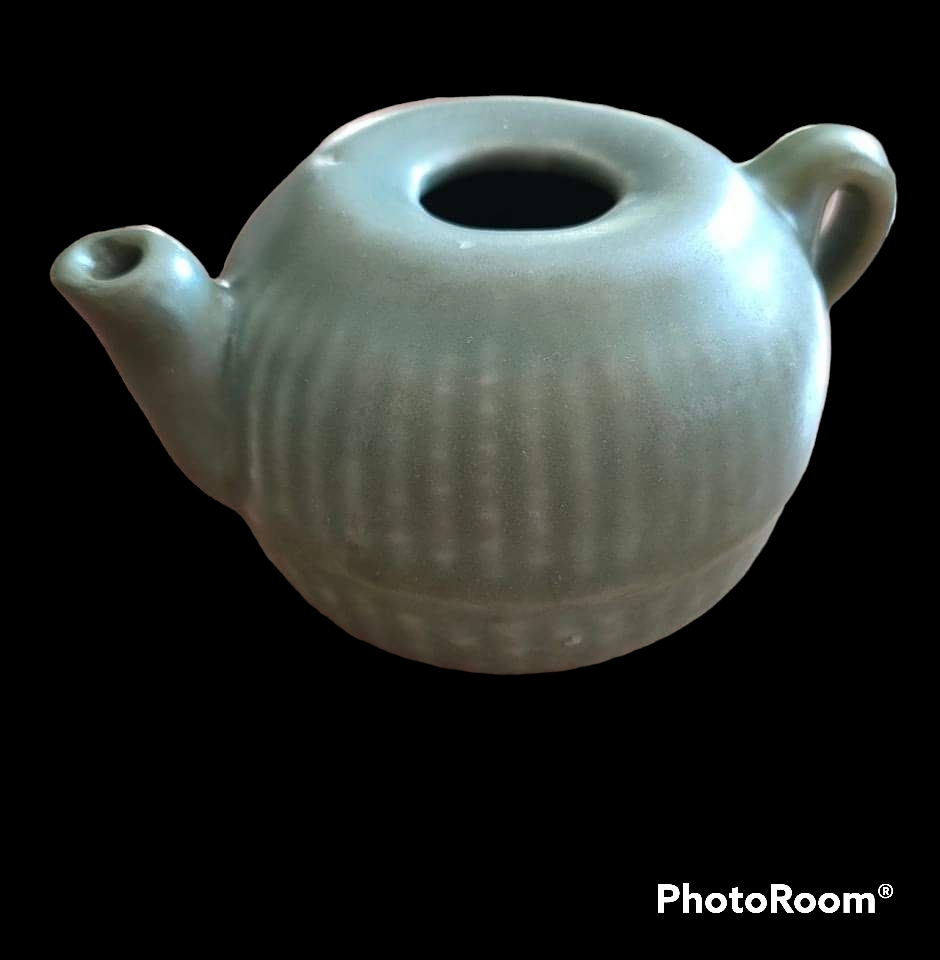 |
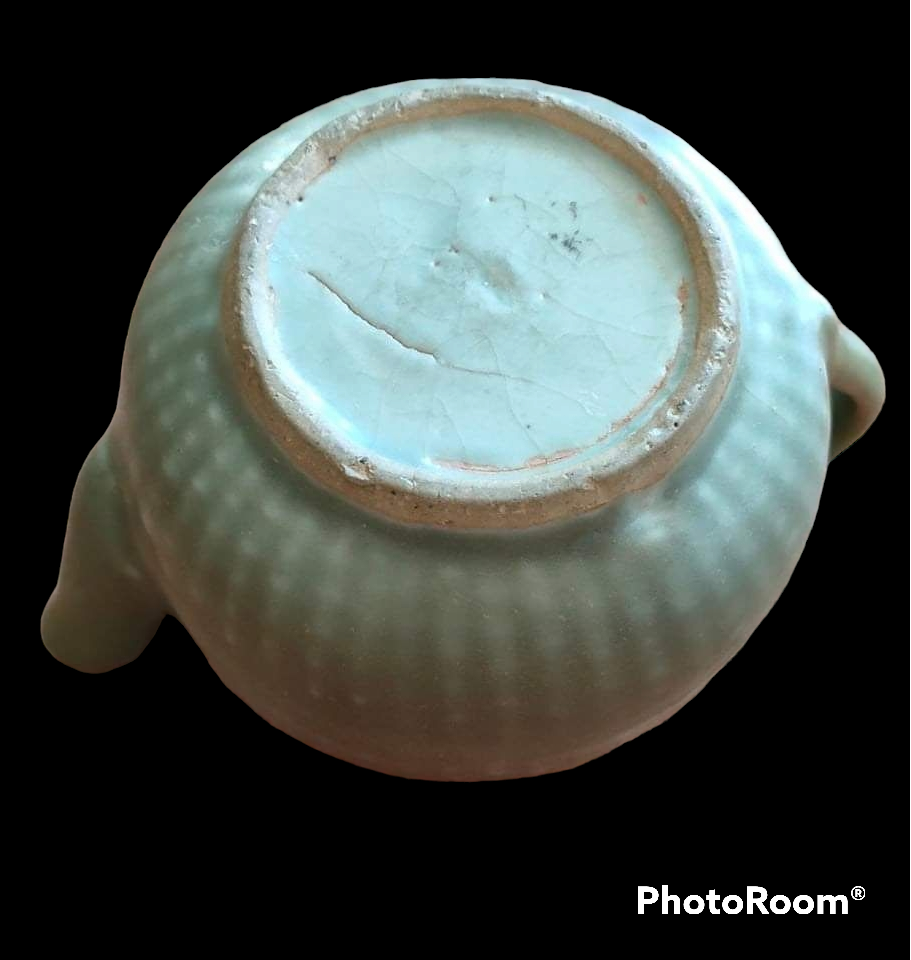 |
||
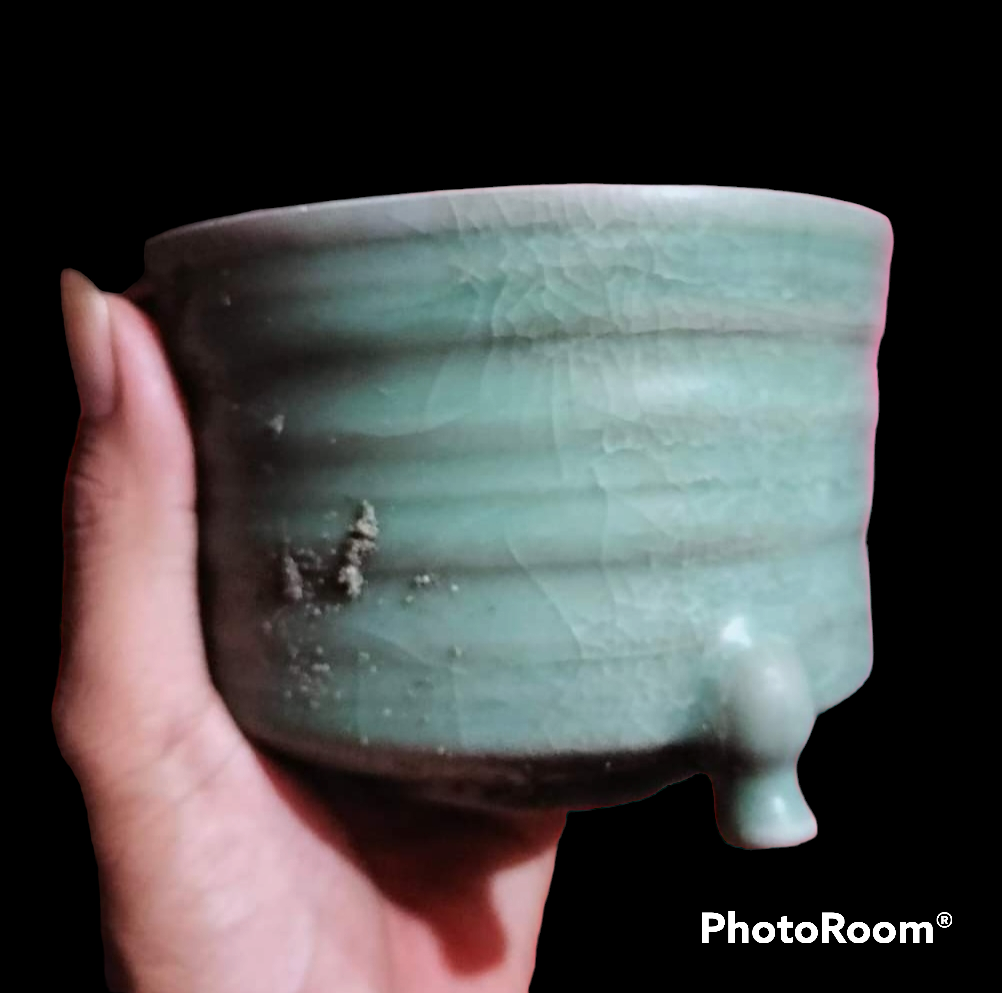 |
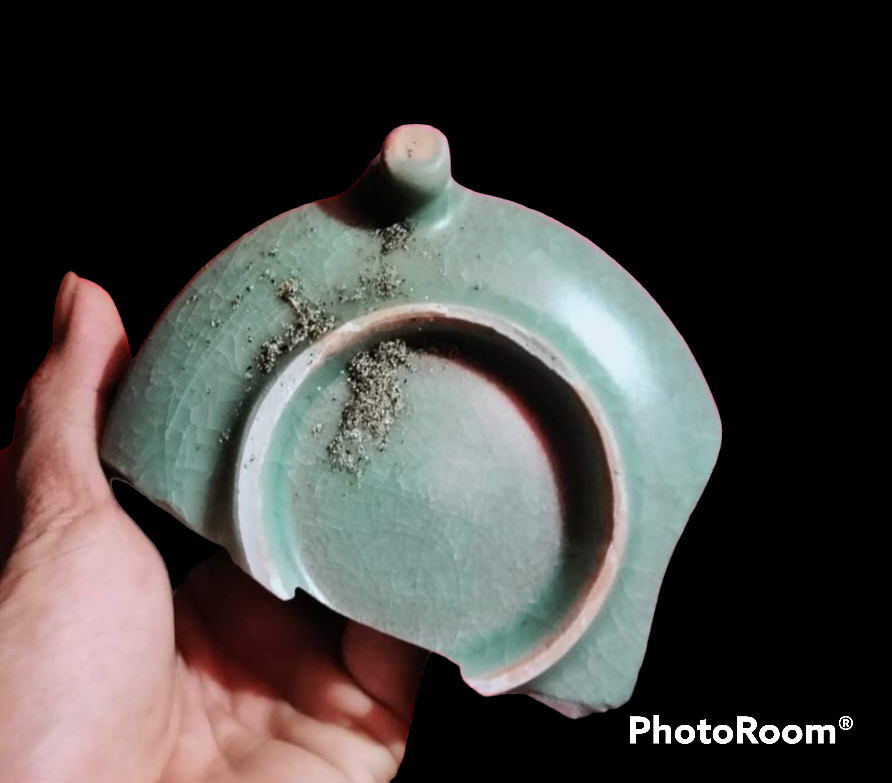 |
||
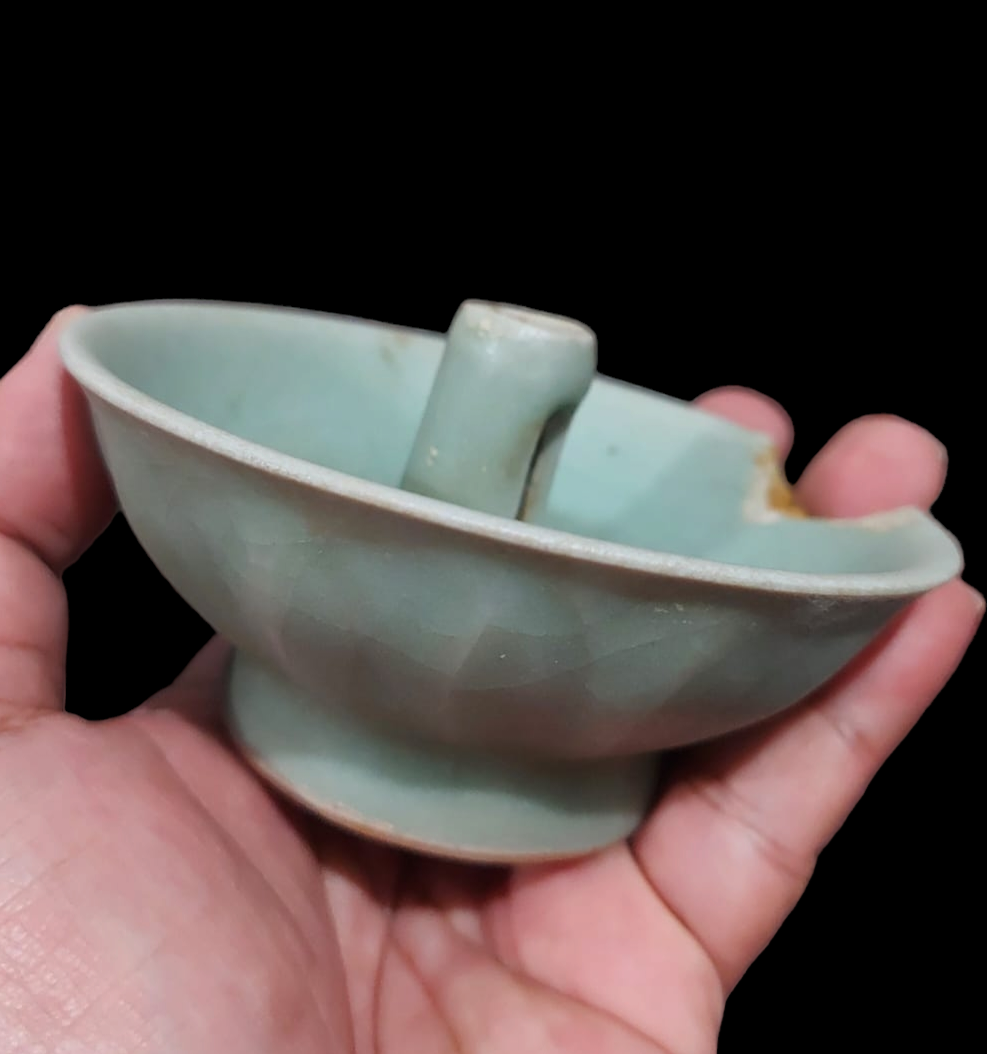 |
 |
||
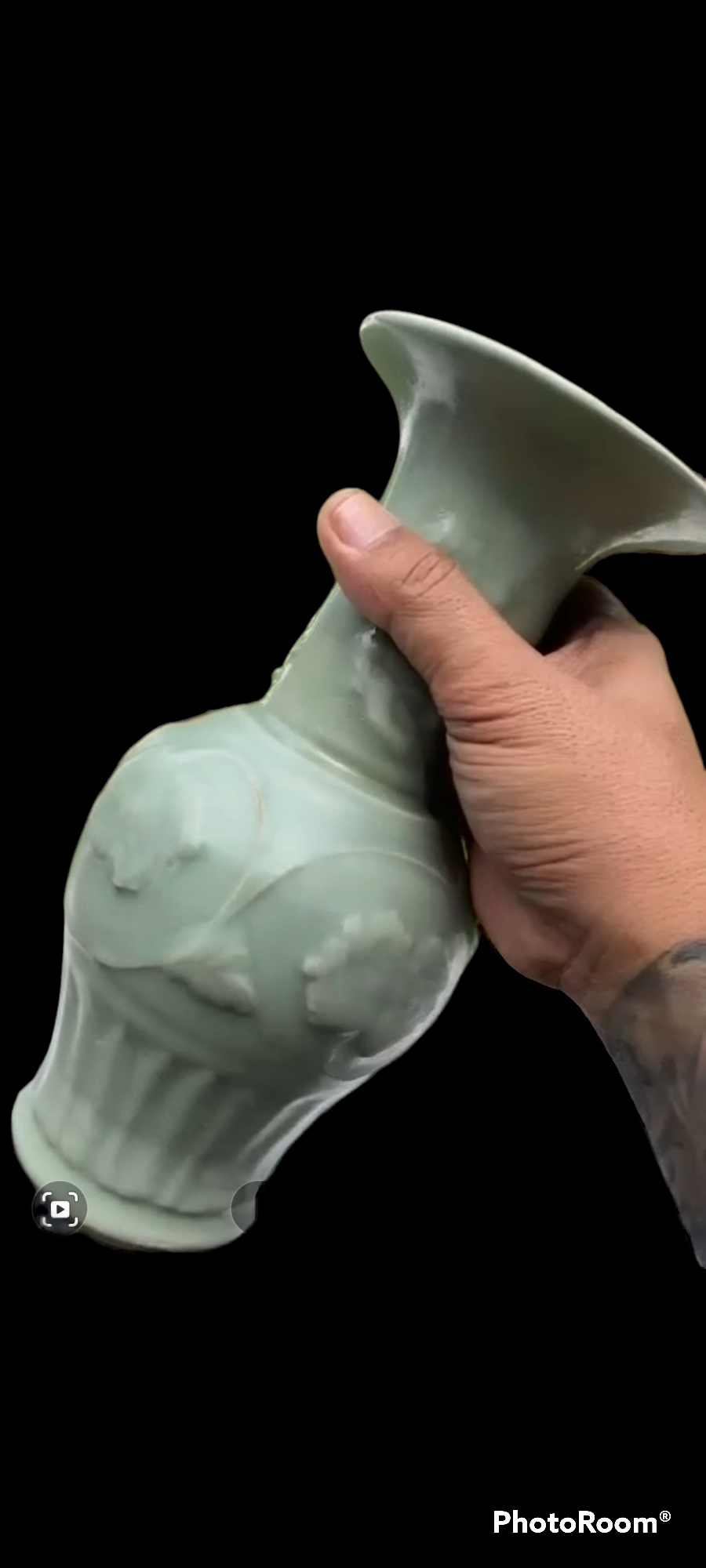 |
|||
Written by: NK Koh (4 Apr 2023)